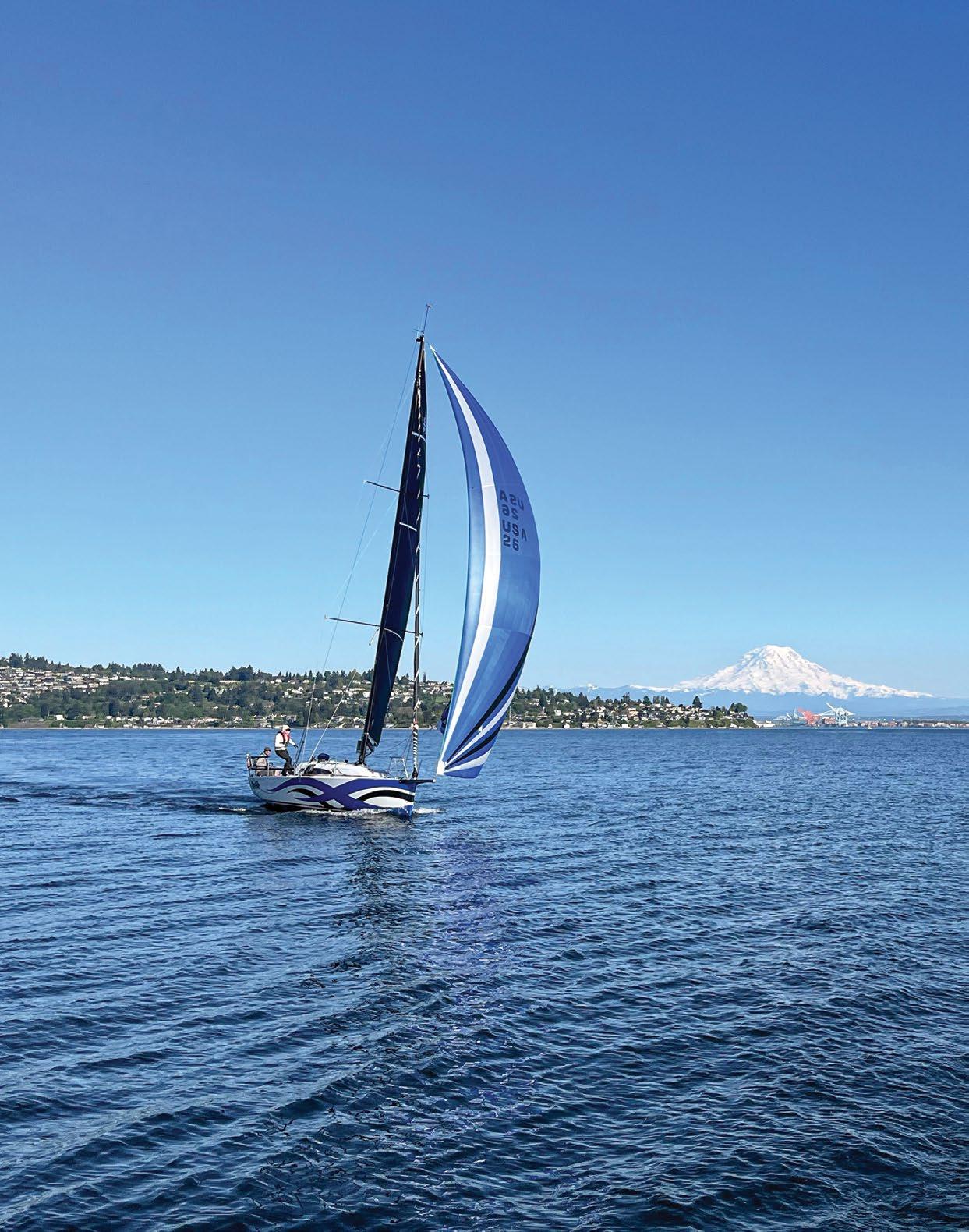
JUNE 2024 26 LAKE WASHINGTON'S PHANTOM RIVER 30 SEA FEASTS OF BRITISH COLUMBIA 36 SEATTLE'S NEWEST CIRCUMNAVIGATOR



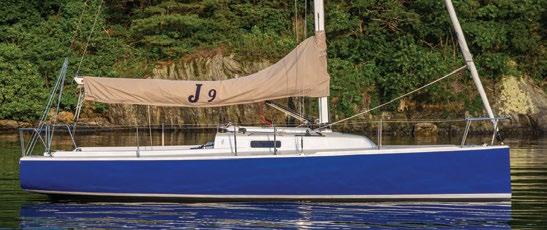
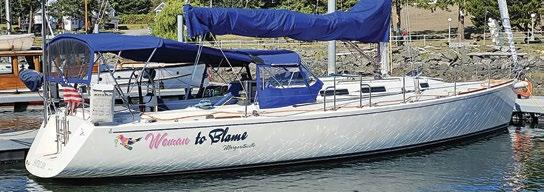
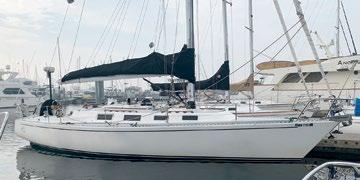

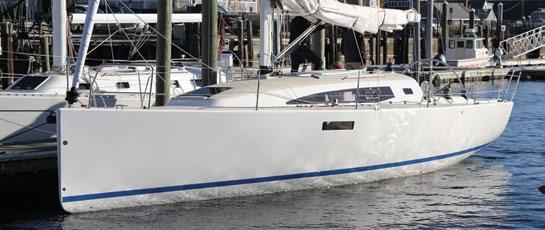




1999 36’ C&C 110 • $89,500 Cruise ready 3 cabin performance cruiser. Easy to sail and a comfortable cruiser with Webasto Heater and a Macerator head she is ready to go. 1996 43’ J/130 • $149,000 This has to be the nicest and best equipped J/130 ever. Newer sails, electronics, sat TVs, dodger and much more. She is a must see and at our dock. 2020 32’ J/99 • $249,000 Equipped for double handed or fully crewed racing and cruising. Great sail inventory and complete suite of Garmin Instruments. She is at our dock and ready for your inspection. J/45 • Early 2025 Delivery Available J/112e • Family Cruising In Comfort & Style J/Sport - J/70 J/80 J/88 J/9 J/99 J/111 J/121 J/Elegant - J/112e J/122e J/45 MJM Series Yachts MJM 3, MJM 35, MJM 4, MJM 42 Shilshole Marina Sales Office • www.sailnorthwest.com • 206-286-1004 Brokerage Boats • We Are Selling Boats and Need Listings NEW J/BOATS • 2025 Delivery Slots Available MJM Yachts • Performance and Luxury J/9 • Hull #64 On Order For Spring 2025 Delivery SOLD PRICE REDUCED 2 J/40s from 1987 • $54,900 Comfort & Speed For Couples That Cruise Across Oceans. The J/40 was the first bluewater offshore cruising boat built by J/Boats. 1992 J/35c • $79,000 Updated popular cruising J/Boat. Newer cushions, main cover, cockpit cushions, dodger and more. She is available for lease back in the Seattle Sailing Club. Sailnorthwest.com • 206-286-1004 • sales@sailnorthwest.com







L Q B T Q + P r o g r a m
S e a t t l e S a i l i n g C l u b ' s L G B T Q +
P r o g r a m p r o v i d e s a s a f e s p a c e f o r a l l
t o s a i l , f o s t e r f r i e n d s h i p s , a n d
a d v o c a t e o n w a t e r . J o i n u s f o r f u n ,
l e a r n i n g , a n d c o m m u n i t y s u p p o r t !
C o n t i n u i n g E d u c a t i o n
C o n t i n u i n g E d u c a t i o n
S e a t t l e S a i l i n g C l u b p r o v i d e s
t a i l o r e d C o n t i n u i n g E d u c a t i o n
o p p o r t u n i t i e s t o b o o s t s k i l l s a n d
c o n f i d e n c e w h i l e l o g g i n g y o u r
s a i l i n g h o u r s u n d e r t h e g u i d a n c e o f
a n A S A i n s t r u c t o r .

W o m e n ’ s P r o g r a m
S e a t t l e S a i l i n g C l u b o f f e r s W o m e n ’ s
S a i l i n g P r o g r a m s y e a r - r o u n d , p r o v i d i n g a
s u p p o r t i v e e n v i r o n m e n t f o r s a i l o r s o f a l l
l e v e l s . J o i n u s f o r a j o u r n e y o f l e a r n i n g ,
c a m a r a d e r i e , a n d s a i l i n g a d v e n t u r e s !
Contact Us
206-782-5100
BLOCK SALE
BLOCK SALE
BLOCK SALE
BLOCK SALE
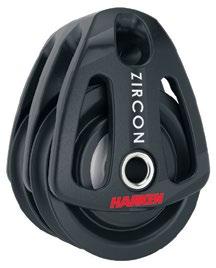
Zircon

Zircon


Zircon
Zircon
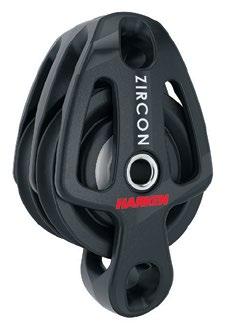


Zircon blocks are the most efficient small boat blocks Harken has ever made. At the core of Zircon performance are industrial ceramic ball bearings mounted inside caged races. The cages keep these bearings apart, so they don’t bunch up, touch, and stop each other.

Zircon blocks are the most efficient small boat blocks Harken has ever made. At the core of Zircon performance are industrial ceramic ball bearings mounted inside caged races. The cages keep these bearings apart, so they don’t bunch up, touch, and stop each other.
Zircon blocks are the most efficient small boat blocks Harken has ever made. At the core of Zircon performance are industrial ceramic ball bearings mounted inside caged races. The cages keep these bearings apart, so they don’t bunch up, touch, and stop each other.
Zircon blocks are the most efficient small boat blocks Harken has ever made. At the core of Zircon performance are industrial ceramic ball bearings mounted inside caged races. The cages keep these bearings apart, so they don’t bunch up, touch, and stop each other.






Black Magic Air Blocks


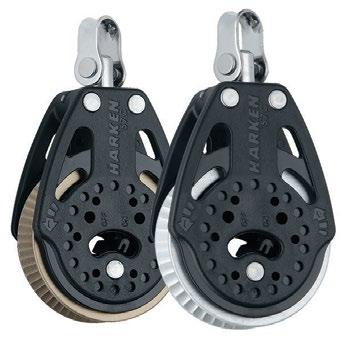
Carbo Air Blocks
Carbo Air Blocks
Carbo Air Blocks
Low-friction Carbo Air blocks are lightweight, strong, reliable—and affordable. Companions to our popular Harken Big Boat blocks, these small, compact blocks have very high working loads for safe, easy trimming.
Carbo Air Blocks
Low-friction Carbo Air blocks are lightweight, strong, reliable—and affordable. Companions to our popular Harken Big Boat blocks, these small, compact blocks have very high working loads for safe, easy trimming.
Low-friction Carbo Air blocks are lightweight, strong, reliable—and affordable. Companions to our popular Harken Big Boat blocks, these small, compact blocks have very high working loads for safe, easy trimming.

Black Magic Air Blocks
Black Magic Air Blocks

Black Magic Air Blocks


Black Magic Air blocks are a top favorite of Big Boat performance racers and cruisers. These lightweight, free-running, powerful performers are used for sail controls that see lots of action: mainsheet, runner, halyard, and spinnaker systems.
Black Magic Air blocks are a top favorite of Big Boat performance racers and cruisers. These lightweight, free-running, powerful performers are used for sail controls that see lots of action: mainsheet, runner, halyard, and spinnaker systems.
Black Magic Air blocks are a top favorite of Big Boat performance racers and cruisers. These lightweight, free-running, powerful performers are used for sail controls that see lots of action: mainsheet, runner, halyard, and spinnaker systems.
Black Magic Air blocks are a top favorite of Big Boat performance racers and cruisers. These lightweight, free-running, powerful performers are used for sail controls that see lots of action: mainsheet, runner, halyard, and spinnaker systems.
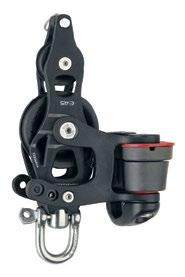
Low-friction Carbo Air blocks are lightweight, strong, reliable—and affordable. Companions to our popular Harken Big Boat blocks, these small, compact blocks have very high working loads for safe, easy trimming.






Element Blocks
Element Blocks

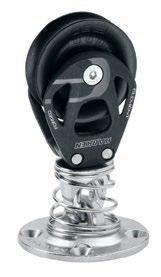


Element blocks accept line from 8 - 16 mm. They are offered in singles, doubles, triples, fiddles, and footblocks in 45, 60 and 80 mm sizes.
Element Blocks

Element blocks accept line from 8 - 16 mm. They are offered in singles, doubles, triples, fiddles, and footblocks in 45, 60 and 80 mm sizes.
Element blocks accept line from 8 - 16 mm. They are offered in singles, doubles, triples, fiddles, and footblocks in 45, 60 and 80 mm sizes.
Element blocks accept line from 8 - 16 mm. They are offered in singles, doubles, triples, fiddles, and footblocks in 45, 60 and 80 mm sizes.
48º NORTH 4 JUNE 2024 1900 N. Northlake Way, Seattle FisheriesSupply.com Call us 800.426.6930
Big Savings on Select Small Boat & Big Boat Blocks Now through June 16 For the complete line of Harken sailing hardware please visit fisheriessupply.com/harken
Big Savings on Select Small Boat & Big Boat Blocks Now through June 16
hardware please visit fisheriessupply.com/harken
For the complete line of Harken sailing
1900 N. Northlake Way, Seattle FisheriesSupply.com Call us 800.426.6930
Big Savings on Select Small Boat & Big Boat Blocks Now through June 16 For the complete line of Harken sailing hardware please visit fisheriessupply.com/harken
1900 N. Northlake Way, Seattle FisheriesSupply.com Call us 800.426.6930
Big Savings on Select Small Boat & Big Boat Blocks Now through June 16 For the complete line of Harken sailing hardware please visit fisheriessupply.com/harken
30 Sea Feasts of British Columbia
Meals from the ocean deepen cruisers’ connections with a place.
36 Seattle's Newest Circumnavigator
Part one of David Linger's round-the-world story.
Cline

20 Hikes for Boaters: San Juan Islands
Some of the region's finest boat-in walks can be found here. By
Michael Boyd
22 Casting Off: A Shocking Revelation
A newer boater gets switched-on to electricity’s dangers. By
David Casey
A Northwest Sailor Navigates the Past
Phantom River: Exploring Lake Washington’s early waterways.
Mighetto
RACING
40 STYC Race to the Strait
SC 27 Norn’s doublehanded weekend, including a COB rescue. 42 Pacific NW Offshore
A crew’s first ocean race was rowdy and truly special.
SYC Smith and Vashon Island Races
Two very different springtime distance races.
48º NORTH 5 JUNE 2024
FEATURES
Andy Cross
By
By Joe
COLUMNS
26
By Lisa
44
ON THE COVER: One Life , a J/99 owned and sailed by David Miller, enjoying some fair weather sailing during the Vashon Island Race after a spring season that otherwise was a gear-busting bash (page 42). Photo by Tyler Wilson.
JUNE 2024 CONTENTS
Background photo courtesy of Karen Johnson.
Editor
Sailors and boaters will be well-versed in the notion, “It’s about the journey, not the destination.” And of course it is. Our boats are so much more than transportation, and the experience underway is often the most fun and rewarding part of any cruise. Still, I’d be surprised if any cruiser didn’t appreciate that not every mile made is joyful—whether it’s the perfunctory slog under power when you’d rather be sailing, or when the sea state robs you of comfort or even the capacity to safely continue.
The spirit of that old adage urges us to live in the moment, adjust our perspectives, and honor those less-than-great moments. What’s on my mind this month, though, are the times when the destination is so dang good it overshadows the voyage getting there. And in the Pacific Northwest, we have a lot of those.
Who among us hasn’t turned the corner into some new cove and gone, “Oh my… this place… exists?” Draped in mysterious mist, through a summer sunset haze, or in the organic technicolor of a windless afternoon with cotton candy clouds and nobody else around—the more you travel the waters of the Salish Sea and Inside Passage, the more opportunity you have to find places that take your breath away. Each time we experience it anew, our gratitude and awe and connection to our surroundings deepens. It just doesn’t get old.
This is front of mind in part because of Andy Cross’s feature in this issue, “Sea Feasts of British Columbia” (page 30). His story is a poignant reminder of one of the many ways that boat folk intertwine our lives with these incredible waters. What are we to do but be wonderstruck by the abundance, diversity, and beauty of such places? Eating of the sea has always increased my sense of responsibility to these creatures and ecosystems—an important facet of connection, I’d say.
The ways that cruisers commune with our environment is as varied as the types of boats that bring us from gunkhole to gunkhole. Yet, across these individualized experiences is a ubiquitous admiration for place—for the waters, rocks, forests, and mountains that envelop them, and living beings with whom we share it all.
No doubt, other corners of the county boast lovely and treasured cruising grounds, but I’ve found this kind of relationship with place to be somewhat unique to Pacific Northwest cruisers, at least among American boaters. Perhaps the personal fulfillment derived from a particular cruising environment tracks inversely with the role of the “cruising lifestyle” community. To me, and I believe to many Salish Sea cruisers, the fact that we value our cruising neighbors and find resonance and shared passion among our fellow boaters feels like gravy. I gather that those rewarding interpersonal networks may be more the main course if the cruising setting isn’t quite as rich. That might be the best thing about calling this region home—you can have it any way you like. If what draws you to the water is the community of remarkably good people who like to boat the way you do, terrific; if it’s the challenge of getting from A to B, perfect; but if it’s an everstrengthening connection to a vibrant ecosystem offering endless natural beauty, your cup will overflow.
This month, perhaps more than any other, brings Salish Sea cruisers off the dock for extended cruising. In a few weeks or months, they’ll return with eyes full of the wonder and affection for this extraordinary water-wilderness (and possibly bellies full of local seafood). Go safely, tread lightly, and enjoy your journey and its destinations.
48º North
Volume XLIII, Number 11, June 2024 (206) 789-7350
info@48north.com | www.48north.com
Publisher Northwest Maritime Center
Managing Editor Joe Cline joe@48north.com
Editor Andy Cross andy@48north.com
Designer Rainier Powers rainier@48north.com
Advertising Sales advertising@48north.com
Classifieds classads48@48north.com
Photographer Jan Anderson
48° North is published as a project of the Northwest Maritime Center in Port Townsend, WA – a 501(c)3 non-profit organization whose mission is to engage and educate people of all generations in traditional and contemporary maritime life, in a spirit of adventure and discovery.
Northwest Maritime Center: 431 Water St, Port Townsend, WA 98368 (360) 385-3628
48° North encourages letters, photographs, manuscripts, burgees, and bribes. Emailed manuscripts and high quality digital images are best!
We are not responsible for unsolicited materials. Articles express the author’s thoughts and may not reflect the opinions of the magazine. Reprinting in whole or part is expressly forbidden except by permission from the editor.
SUBSCRIPTION OPTIONS FOR 2024! $39/Year For The Magazine
$75/Year For Premium (perks!) www.48north.com/subscribe for details.
Joe
Cline Managing Editor,
48° North I’ll see you on the water,
Prices vary for international or first class.

Proud members:

48º NORTH 6 JUNE 2024
SOMETIMES, IT IS ABOUT THE DESTINATION 6



















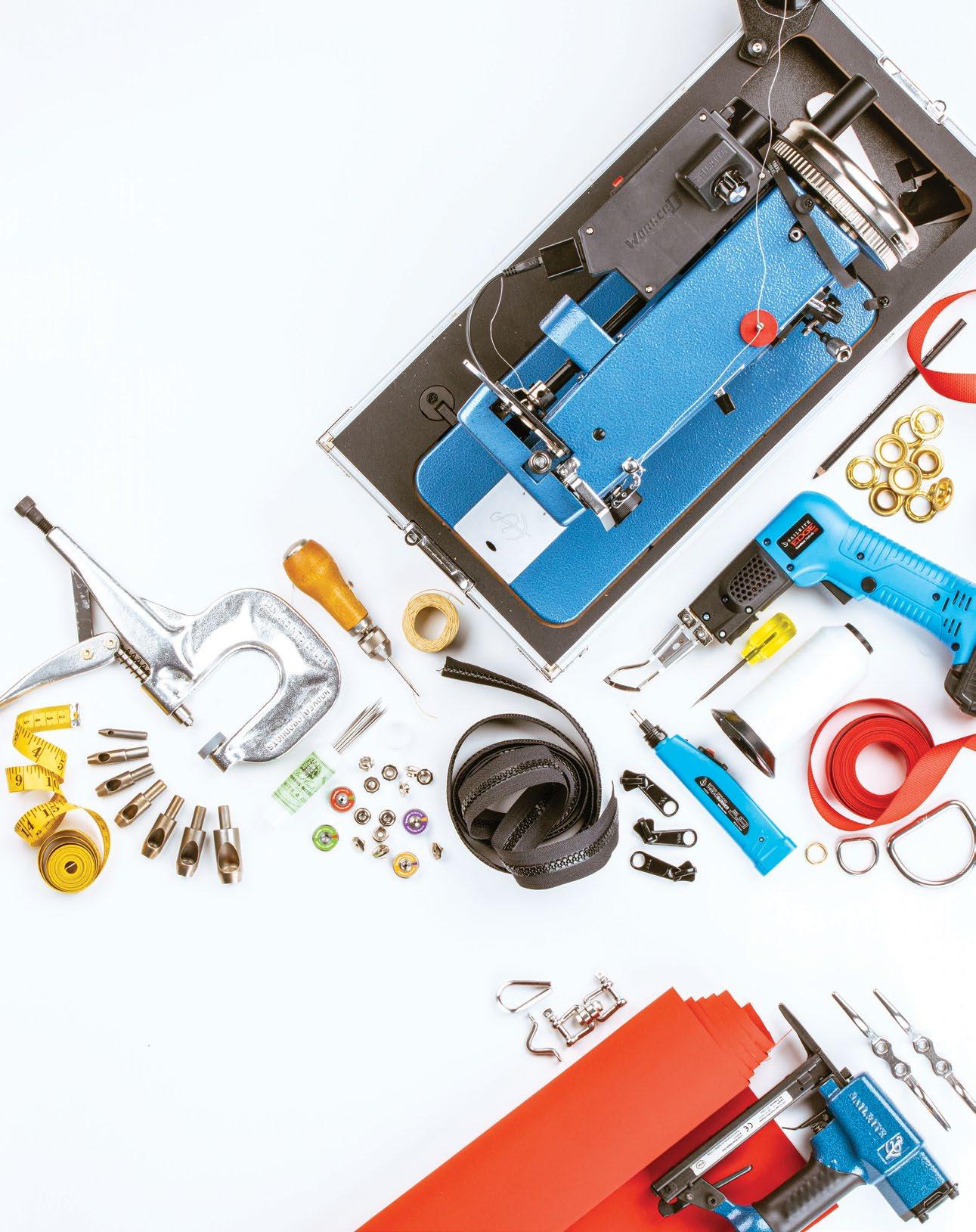
INDOOR/OUTDOOR VINYL
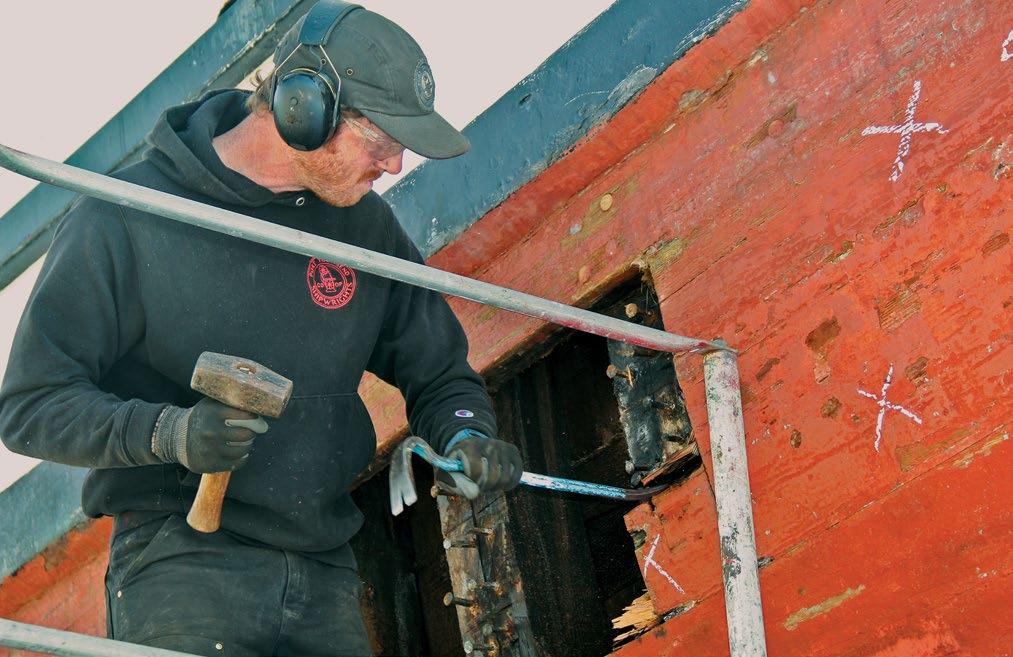

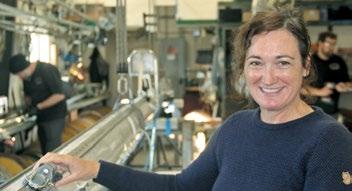
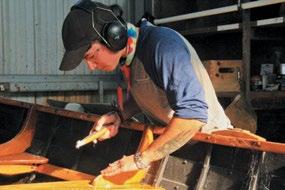


48º NORTH 8 JUNE 2024

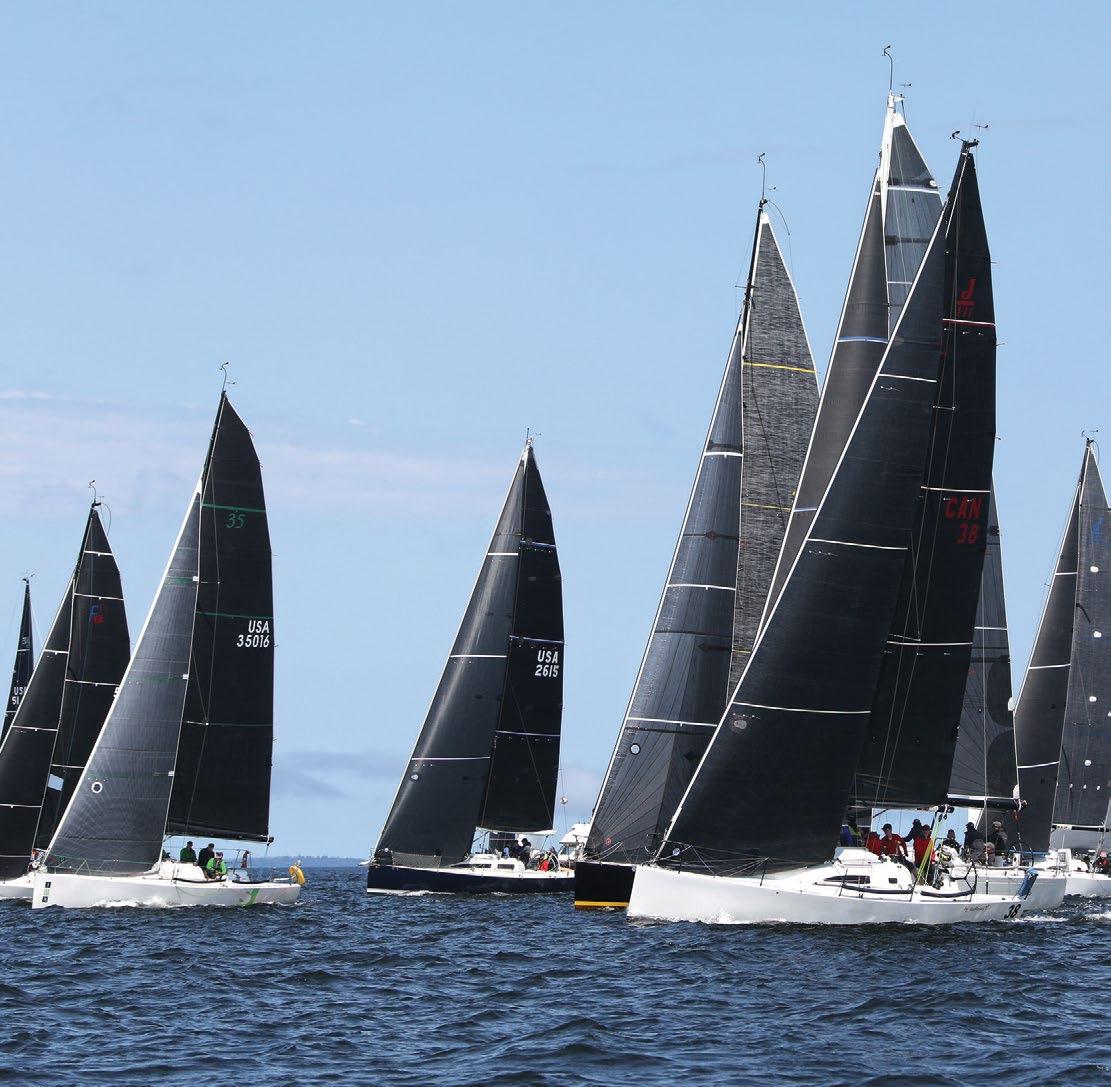

Spencer Kunath, Navigator TP52 Glory
FUN!
SUNDAY JUNE 23
SkipperS Meeting & OPENING NIGHT PARTY Featuring aaron CrawFord
MONDAY JUNE 24
raCing Followed by JIMMY BUFFETT NIGHT Featuring dJ Mark JenkinS
TUESDAY JUNE 25
raCing Followed by REGGAE NIGHT Featuring dJ Mark JenkinS
WEDNESDAY JUNE 26
raCing Followed by PRETTY IN PINK NIGHT Featuring gertrude’S HearSe
THURSDAY JUNE 27
raCing Followed by ABBA NIGHT Featuring tHe abbagrapHS
FRIDAY JUNE 28
raCing Followed by OVERALL AWARDS Featuring SJatr


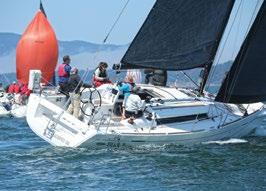
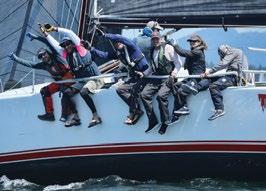
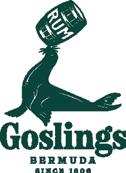











48º NORTH 9 JUNE 2024
June 24-28, 2024 l RaceWeekPNW.com
RACE! PARTY! PLAY! "Race Week in Anacortes exceeded our expectations in every way."
ORC, PHRF, One Design, Cruising Class
REGISTRATION NOW OPEN!
Photos by Jan Anderson


Response to Ocean Smith’s Article “Big Fleet in a Small Town” from the March 2024 Issue
Joe,
I’m sitting on my boat in Manele Harbor. Brought her back from Oahu yesterday. Catching up on 48° North
There’s an article in the March issue by a high school student named Ocean Smith. You or someone at the office should slap that kid on the back. I know PT well. That’s a great article on the bird fleet!
Good on you guys for giving that kid an internship.
Gary Bilyk
Inclusiveness Across Boating Activities
Hey Joe,
Model Shown Beta 38
Engineered to be Serviced Easily!
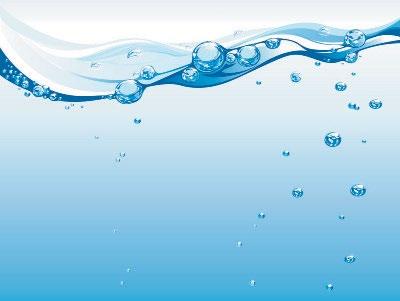
Beta Marine West (Distributor)
400 Harbor Dr, Sausalito, CA 94965 415-332-3507
Pacific Northwest Dealer Network
Emerald Marine
Anacortes, WA • 360-293-4161 www.emeraldmarine.com
Oregon Marine Industries Portland, OR • 503-702-0123 info@betamarineoregon.com
Access Marine
Seattle, WA • 206-819-2439 info@betamarineengines.com www.betamarineengines.com
Sea Marine
Port Townsend, WA • 360-385-4000
info@betamarinepnw.com www.betamarinepnw.com
Deer Harbor Boatworks
Deer Harbor, WA • 844-792-2382 customersupport@betamarinenw.com www.betamarinenw.com
Auxiliary Engine 6701 Seaview Ave NW, Seattle WA 98117 206-789-8496 auxiliaryeng@gmail.com
I wanted to reach out and say how much I appreciate your writing at 48° North. Most other sailing rags are singularly focused on racing, cruising, small boats, etc., and you somehow manage to cover all these things in a way that’s super inclusive—both in the articles in the magazine but also in your editorial writing specifically.
I don’t ever race myself (R2AK doesn’t count as a race for me!), I’m a dirtbag camp cruiser and sometimes liveaboard voyager, and I always find something in 48° North that speaks to me. Even when I read about all the races I’ll never sail in, I don’t ever feel like I’m on the outside of some exclusive community. I feel more like I’m part of a big diverse family of people who love the water.
I can’t imagine it’s easy to cater to so many different perspectives, but it’s much appreciated!
Michael Dougherty
Response to Other Recent 48° North Articles:
Andy Hawks (regarding Michael Boyd’s South Sound focused “Hikes for Boaters” column from the April issue): Really enjoy these new boater-hiker columns.
Daniel Joram (regarding Joe Cline’s Editorial “Extraordinary Achievements Outside the Limelight” from the May issue): Joe I love this format. The PNW is full of amazing people doing amazing things regardless of spotlight. Maybe this can be a nomination section.
Colin from SV Rub-A-Dub (Regarding photo choice in the “Diesel Deep Dive” column discussing saildrives and direct drives): Gotta say, the [corroded saildrive] is how my prop looked on my direct drive. This picture is kind of a bad choice. I could find an opposite picture to make direct drive look horrible.
48º NORTH 10 JUNE 2024 LETTERS 10 All
the Power You Need






48º NORTH 11 JUNE 2024 Aspen C100 New Yanmar power delivers trawler-like fuel consumption even at speed! C100 shown cruising 17mph • NEW! Yanmar power delivers 4.1GPH/300+mile range at 17mph Cruise* Top Speed 26mph • Incredible 1.1 GPH/633mile range @ 8.7mph* • Smooth Ride • Easy to Maneuver 34’8” LOA x 10’ Fits in Standard Slips • 2 Cabins, 1 Head • Fully Appointed Galley • King Size Master Bed Contact us for your private factory tour and demo ride. Family owned and operated | aspenpowercatamarans.com | 360-668-4347 *Fuel stats are estimates Play More, Burn Less The efficiency to go where you want, when you want NOW WITH POWER Aspen C100 New Yanmar power delivers trawler-like fuel consumption even at speed! C100 shown cruising 17mph • NEW! Yanmar power delivers 4.1GPH/300+mile range at 17mph Cruise* Top Speed 26mph • Incredible 1.1 GPH/633mile range @ 8.7mph* • Smooth Ride • Easy to Maneuver 34’8” LOA x 10’ Fits in Standard Slips • 2 Cabins, 1 Head • Fully Appointed Galley • King Size Master Bed Contact us for your private factory tour and demo ride. Family owned and operated | aspenpowercatamarans.com | 360-668-4347 *Fuel stats are estimates



The Best Costs Less with BoatU.S. Details of services provided can be found online at BoatUS.com/Agree. TowBoatU.S. is not a rescue service. In an emergency situation, you must contact the Coast Guard or a government agency immediately. BoatUS.com/Towing 800-395-2628 Just $175 for Unlimited Towing Why pay more when you can pay less and get the best towing assistance on the water? The red boats of TowBoatU.S. are the largest fleet in the nation and will have your back when you need it most. PLUS, your Towing Membership includes more than 26 benefits that help boaters make the most of their time on the water. GET TOWING + MORE!
News from the Northwest Maritime Center »
GRIZZLY POWERTOOLS SPONSORS NWMC BOATSHOP, OUTFITTING IT WITH A COMPREHENSIVE SET OF NEW TOOLS
The Northwest Maritime Center Boatshop is always busy. From woodworking and boatbuilding classes, to student projects, as well as the occasional space rentals from the broader community of boat-folk—the aroma of fresh sawdust and the palpable enthusiasm for learning and newfound capabilities are everpresent.
In spite of all this excitement, energy, and productivity, the Boatshop's equipment has been aging. When identifying the best course forward, sometimes, the first step is to dream big.
Faced with questions of what tools to replace, where to source them, and how updates affect the non-profit budget, NWMC Boatshop Manager Joel Arrington and NWMC Brand and Sponsor Specialist Anna Waters thought outside the box. Might a tool company sponsor a complete overhaul? The ember of an idea was soon fully alight, and conversations were underway with the Bellingham, Washington based manufacturer of fine professional tools, Grizzly Industrial Tools.
Grizzly was immediately excited by the prospect of helping the next generation of shipwrights and enthusiasts build the skills that would serve them, and enable the build of new vessels and the refit and repair of existing ones. Grizzly Marketing Manager John Williams described it as, “Woodworkers helping woodworkers.”He continued, “We saw both a need and an opportunity to take our passion for sharing in a new direction. It’s our way

of investing in the future of what we do, and giving back to the community that has made us successful.” In total, the sponsorship included a donation of more than $50,000 in new tools—everything from their tough and reliable array of 20v battery operated handheld power tools to fixed tools like a beautiful 24" bandsaw, a massive thickness planer, a 12" jointer, and a state of the art dust collection system.
NWMC Chief Executive Officer, Jake Beattie, said, “It's almost a whole new shop…. The why of it is just as incredible. Grizzly Tools wanted to support our work of getting more people, and especially young people, connected to craft and hands-on skills.... Look for more
collaborations on class offerings in the future. This feels like the beginning of a beautiful friendship.”
Whether you're hoping to learn more about boat building or repair skills yourself, or envision sending your children or grandchildren to classes at NWMC, this new equipment will help facilitate the highest quality experience.
Grizzly Industrial Tools wanted to be a part of something special. And by taking action, they have made so many extraordinary opportunities possible for others.
» www.nwmaritime.org/programs/ adult-programs/2024-boatshopworkshops/.com
» www.grizzly.com





48º NORTH 13 JUNE 2024
48° North has been published by the Northwest Maritime Center (NWMC) since 2018. We are continually amazed and inspired by the important work of our colleagues and organization, and dedicate this page to sharing more about these activities with you. RACE TO ALASKA! June 8: Ruckus June 9: Port Townsend Start June 12: Victoria Start PORT TOWNSEND BAY TOURS Saturdays, June 28-August 31 Northwest Maritime Center BASIC KEELBOAT CLASSES Multiple Dates in June Both Part 1 and Part 2 Port Townsend Bay WOODEN BOAT FESTIVAL September 6-8 Northwest Maritime Center Point Hudson Marina EVENTS CALENDAR » www.nwmaritime.org/events
Swan Hotel 48° North
RACE TO ALASKA
Wooden Boat Foundation Northwest Maritime Center
NWMC Boatshop Manager Joel Arrington gets to know the knew Grizzly Tools. Photo by Kevin Lowden.
low tides » News & Events
COMMUNITY BOATING CENTER CELEBRATES COMPLETION OF WHEELHOUSE BUILDING PROJECT
Bellingham’s Community Boating Center (CBC) recently announced the completion of its long-awaited Wheelhouse Building Project, marking a significant milestone in the organization’s journey to enhance accessibility and inclusivity in recreational boating.
The Wheelhouse Building will provide fully accessible, heated spaces with real restrooms and showers, along with classroom and community facilities to support their ever expanding programs. These programs offer the chance for people of all backgrounds, ages, and abilities to get out on the water, learn safe boating skills, and build confidence and community, while promoting marine stewardship through therapeutic recreation.
The completion of the Wheelhouse Building is just the first phase of CBC’s vision for the future. With plans to incorporate adaptive boats and equipment and electric safety boats, the CBC is committed to further enhancing its ability to better serve all community members. These phase two initiatives will align with the future completion of the Port of Bellingham’s Small Watercraft Dock adjacent to CBC’s campus. This will be the first accessible dock north of Everett to offer unprecedented access to the water for all.
To celebrate this milestone and to support CBC’s continued growth, the organization will be hosting its first annual “Seize the Bay” event on June 23, 2024. Folks will have the opportunity
MARINE BUY-SWAP-SELL MEET AT OAK HARBOR YACHT CLUB
JUNE 8
America’s Boating Club of Deception Pass and the Oak Harbor Yacht Club are sponsoring a marine buy-sell-swap meet on Saturday, June 8 at the Oak Harbor Yacht Club from 10 a.m. to 2 p.m. The event will also feature low-cost, clean and inspected crab gear for sale.
Club Commander Jerry Liggett noted that this is a community member event for marine and boating-related items only, and no professional vendors will be allowed. He added, “Bring cash and stock up on used and useful tools, marine hardware, supplies and more. For those of you looking to reduce the amount of your boating ‘stuff’, this is the place to bring it!”
Liggett predicts the crab gear will go fast. It is clean and inspected, and includes the pot, approximately 80 feet of leaded line, new rot cord, bait bags or boxes, and Washington State legal floats in the size and color required. The pots are priced starting at $25, ranging up to $50 for stainless steel pots. Cash or checks made out to DPSPS will be accepted, and no credit or debit card transactions are available. No early-bird shoppers will be admitted, and pots are limited to first-come, first-served.
For those wishing to sell marine-related items, the boating club recommends bringing your own setup materials, such as tarps, tents, tables, etc. They will not be provided. Setup starts no earlier than 9:30 a.m. and space must be vacated by 2:30 p.m. The club provides no payment systems, and there is no WiFi on site. Participants must bring their own change and decide their own credit card or check policies.
For more information regarding this event, please email » jliggett4@hotmail.com
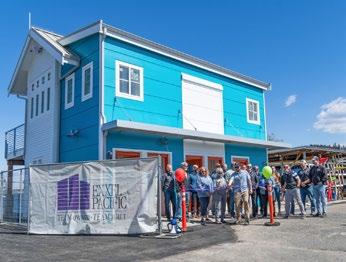
to get on the water and try out boats and activities. And after your fun on the water, you can enjoy a food truck and onsite beer garden—celebrating the “Seize the Bay” beer release with Stones Throw Brewing.
» www.boatingcenter.org/wheelhouse.
MOBILE PUMPOUT BOATS GAIN POPULARITY, CONTINUE TO EXPAND THROUGHOUT PUGET SOUND
Options for recreational boaters to pump out boat sewage safely and efficiently are expanding throughout Puget Sound as the number of traveling “pumpout boats” grows. When combined with stationary pumpout units at marinas, these grant-funded mobile pumpout boats keep an estimated 8-10 million gallons of sewage out of Puget Sound annually, protecting shellfish beds and improving overall water quality. Recreational boating has steadily increased in popularity around Puget Sound since the pandemic. That’s one reason Washington State Parks’ Clean Vessel Act program is making it a priority to help fund and coordinate with ports and marinas as they add more mobile pumpout boats to meet the growing needs of boaters.
Area ports and marinas are equally motivated to provide pumpout services. Puget Sound’s Kitsap and Pierce Counties recently expanded services on Blake Island, Liberty Bay, Eagle Harbor, Illahee State Park, Fort Ward and Port Madison. Port Townsend also has a mobile pumpout based at Boat Haven Marina and Port Ludlow maintains a wood and fully electric pumpout boat.
To make it easier for boaters to find a nearby mobile pumpout boat, Washington State Parks partnered with Washington Sea Grant to develop the Pumpout Boat Tracker, a GIS map that locates mobile boats in real time. Find a full list of mobile pumpout boats and pumpout stations on the Pumpout Washington website: » pumpoutwashington.org.
48º NORTH 14 JUNE 2024


Juan Island Adventure
Hanse and Beneteau sailboats
out of beautiful Fidalgo Bay, Anacortes, Washington.
your American Sailing 101,103 and 104 certifications with us in the heart of the season! We have open spaces in our Cruise N Learn courses June, July, August and September and also have room in our ASA 101-106 courses throughout the peak 2024 sailing season. We run ASA instructor clinics throughout the year.
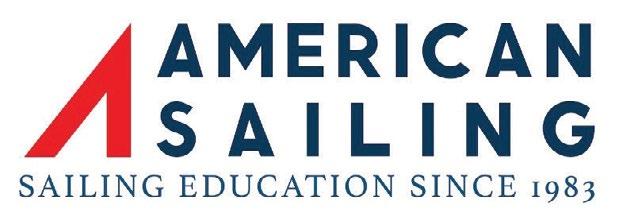
48º NORTH 15 JUNE 2024 Sail Through Summer! Join us on
Come up to Anacortes and stay for the weekend where sailing is the best! 719 28th Street, Anacortes, WA 98221 sailtime.com/location/anacortes/sailing-school Sign up online or call us directly to schedule: 360-245-1320
a San
aboard our
based
Achieve
CROSSWORD AND TRIVIA
DID YOU KNOW?
by Bryan Henry
Of all the animals that live in the oceans, 120 species are marine mammals.
The oceans are home to micro-animals smaller than the head of a pin, as well as blue whales which are the largest animals ever to have lived on Earth.
Eighty percent of the world’s freshwater fish species live in the Amazon River.
The Antarctic ecosystem supports more than 200 species of fish, 12 species of whales, 35 species of birds, and six species of seals.
Minute sea animals called copepods outnumber all other animals on earth combined.
As many as 1,000 different fish produce light in the deep oceans.
ACROSS
1 Sail for a downwind course 7 Camera shot, abbr.
Proceeding on its voyage, as a
Fluid transporter on a vessel
Highest point of a wave
Aft or trailing edge of a foreand-aft sail 15 Camping vehicle
18 What is done in dry dock 21 It holds a boat in place
Break bread 23 Rear part of a ship
Great Lakes term for a vessel that sails the oceans
Blue lake on the California border 30 Warm wind of the west 32 Mature, as wine
Opening on the side rail that allows water to run off
Rain cats and dogs
Islands off the coast of West Africa, 2 words
Spill the wind from or reduce the exposed area of a sail in an unusual manner
Fishing spot 17 Stop the engines from operating, 2 words 19 Goes up and down, as a bow
Scudded 25 Betelgeuse or Sirius, e.g. 26 Boat with an open hold
Attorney General, abbr.
Some deep-sea shrimp emit light from their mouths to blind or distract predators, allowing the shrimp to escape into darker water.
Sailfish and marlins are found in the Atlantic, Pacific, and Indian Oceans.
The longest bony fish in the ocean is the 25-footlong rare oarfish that can weigh more than 600 pounds.
The Nile catfish swims upside down to feed on algae from the undersides of aquatic vegetation.
Sea hares emit a cloud of purple ink when disturbed.
Some sea anemones can live as long as people— up to 70 years or more.
A female oyster can produce more than 100 million eggs at a single spawning.
Oysters are the most profitable mollusks that are farmed.
Encrusting sea sponges secrete an acid that enables them to bore into rocks and shells.
There are more than 500 species of mantis shrimp, ranging from a half inch to 18 inches.
48º NORTH 16 JUNE 2024
16
9
10
11
14
Container
vessel
13
33
34
DOWN 1
the deck 2
3
destination 4
5
6
7
8
20
29 Hearing organ 31 Falcon film 12 345678 9 10 11 12 13 14 15 16 17 18 19 20 21 22 23 24 25 26 27 28 29 30 31 32 33 34 » See solution on page 50
22
24
27
Boat propeller
Flying fish eaters
Camera rotation
Columbus’ 1492
The usual
Legendary sea monster
Road, abbr.
12
16
28

Enjoy boating at its finest with access to the world-famous scenic regions of the Olympic Peninsula, Puget Sound, and Vancouver Island.
The Boat Haven provides moorage, electricity, haul-out facilities, and on-site US Customs services. We also invite you to slip on in and visit the newly remodeled fuel dock which supplies gas, diesel, and lubricants.







































The MKIV Ocean furler: It’s built for hard work. Which is nice because nobody aboard is particularly interested in that.




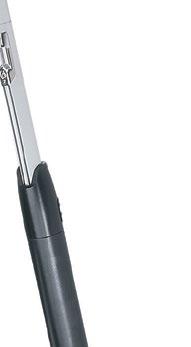

We developed the brand new MKIV Ocean furler especially for cruisers who would prefer a furler for cruisers. One smooth-rolling and bulletproof — to stand and deliver for years. Designed especially for intuitive assembly and retrofit, the Ocean furler offers the features cruising sailors have been requesting — at a price we hope is the most competitive thing about it.



48º NORTH 17 JUNE 2024
HIGH PERFORMANCE, YES. RACY, ABSOLUTELY NOT.
©
Tommy Bombon
2804 Canon St., San Diego, CA 92106 | T: 619.225.9411 E: sales@sailingsupply.com | www.sandiegomarine.com NOW AVAILABLE AT NOW AVAILABLE AND PROFESSIONALLY INSTALLED AT
t
Providing
1946 360.457.4505 pamarina@olypen.com www.portofpa.com
MKIV OCEAN VIDEO
P
Angeles Boat Haven
Safe Harbor Since
832 Marine Dr • Port Angeles, WA 98363 360.457.4505 • pamarina@olypen.com • www.portofpa.com Proudly
Us:
Operated By: Contact
low tides » Products News
» GRUNDENS TOUGH SEAS ANKLE BOOT
No matter the season in the Salish Sea, having a high quality boot to wear on deck and ashore is essential. Grundens new slip-resistant certified, commercial-grade Tough Seas Ankle Boots are ideal whether you work on the sea or in a boatyard, or are cruising the Inside Passage. These Chelsea-style boots feature a HeiQ Fresh Anti-Odor lining and SmartTemp thermoregulating lining finish, 100% waterproof construction, and a triple-layered and textured toe and heel for extended durability and ruggedness. Compressionmolded EVA midsoles with heel stabilizer provide all-day comfort and support, and the razor-siped waterproof outsole with tread is designed for maximum surface contact and wet deck traction.
Price: $139.99 » www.grundens.com
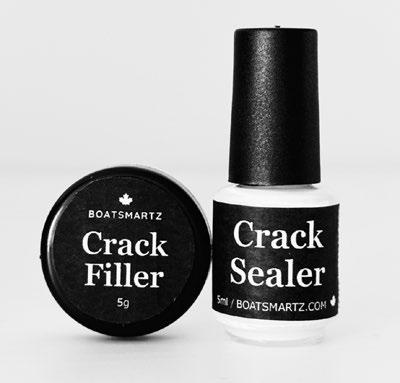
» ODEO SOS FLARE

» BOATSMARTZ GELCOAT REPAIR KIT
The brainchild of a passionate sailor and chemical engineer based in Vancouver, B.C., this new gelcoat repair kit is designed to quickly and easily fill hairline and spider cracks on your boat without the need to sand. Cracks can be filled in minutes, using everyday equipment and supplies and curing takes 24 hours, after which your boat is ready for use. The gelcoat repair kit delivers superior adhesion to your boat’s fiberglass and gelcoat, and creates a hard finish that cannot be washed off, stands up to pressure washing just 24 hours later, and resists yellowing (UV resistance) from sun. Boatsmartz’s crack filling system is based on a two-step “seal and fill process” utilizing nano-particles that are able to completely fill the hairline crack. You can fill cracks above and below the waterline, and it does not dry too quickly, giving you time to work it into the crack before it starts to cure. The product comes in two sizes, a mini kit and a maxi kit.
Price: $20-$30 » www.boatsmartz.com
Marine safety equipment manufacturer, Daniamant, recently introduced their new ODEO SOS Flare to their range of electronic visual distress signals (eVDS). The ODEO SOS is certified to meet US Coast Guard requirements, which means it can be used instead of pyrotechnic flares in some countries (USA, Tasmania, Australia, and Finland). The light provides a high intensity internationally recognised SOS morse signal, ideal for sailors, maritime professionals, and outdoor enthusiasts. Utilizing powerful LED lighting technology, the ODEO offers enhanced visibility via an impressive 2500cd peak equivalent output, ensuring that distress signals are easily spotted, even in challenging conditions and low visibility environments. Its user-friendly, ergonomic design and intuitive controls make it easy to use, allowing boaters to activate the distress signal quickly and efficiently, even in high-pressure situations with
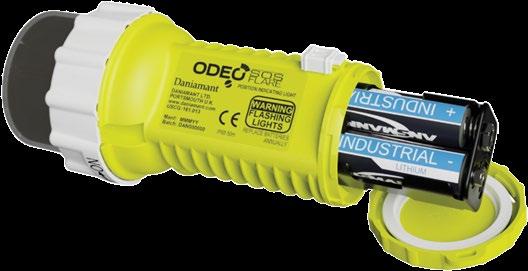
cold gloved hands. The unit is waterproof to 5 meters and has been tested at depths of 50 meters, and its lithium battery lasts up to 9 hours.
Price: $104.94 » www.daniamant.com
48º NORTH 18 JUNE 2024
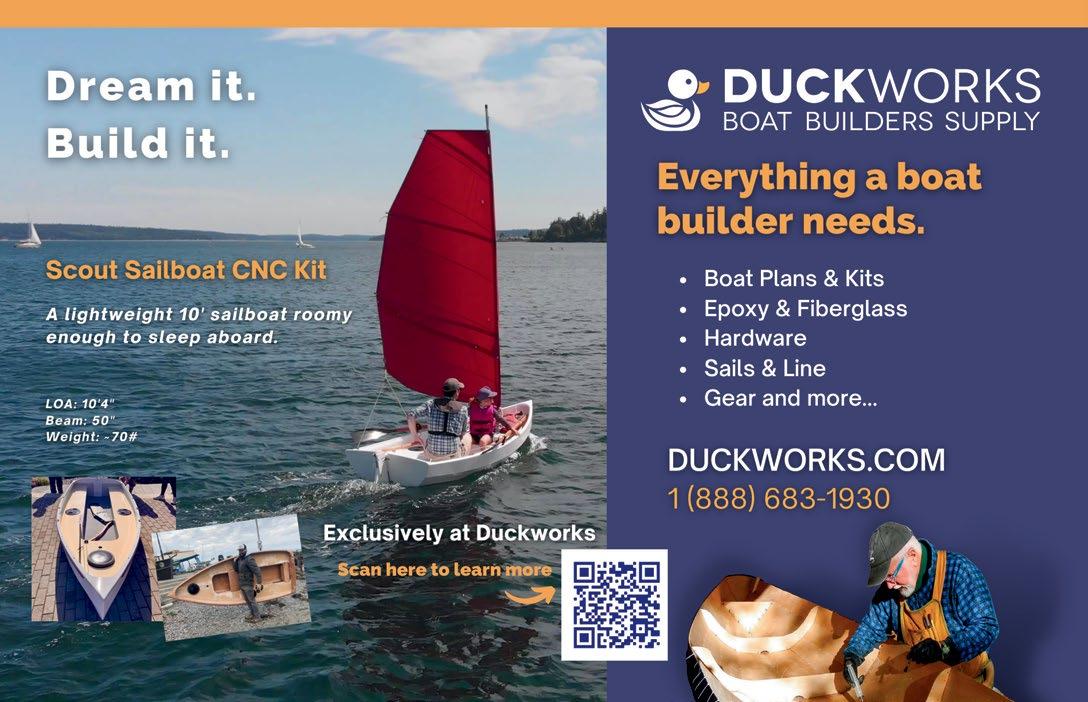




The AquaDrive system solves a problem nearly a century old; the fact that marine engines are installed on soft engine mounts and attached almost rigidly to the propeller shaft.
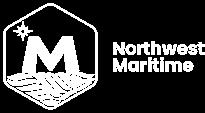
The very logic of AquaDrive is inescapable. An engine that is vibrating on soft mounts needs total freedom of movement from its propshaft if noise and vibration are not to be transmitted to the hull. The AquaDrive provides just this freedom of movement. Tests proved that the AquaDrive with its softer engine mountings can reduce vibration by 95% and structure borne noise by 50% or more. For information, call Drivelines NW today.

48º NORTH 19 JUNE 2024 INSTALL Business
or Pleasure, AquaDrive will make your boat smoother, quieter and vibration free.
311 S. Brandon St, Seattle, WA 98108 • (206) 622-8760 Visit Our Web Site: www.aquadrive.net 5hp – 2000hp Ships FREE Ground UPS! “A‑Northwest Legend for Over 25 Years” CREATE. CRAFT. LEARN. Boatbuilding & woodworking classes for all skill levels at the Northwest Maritime Center. Learn more at nwmaritime.org 431 Water Street, Port Townsend, WA 360.385.3628 | info@nwmaritime.org CREATE. CRAFT. LEARN. Boatbuilding & woodworking classes for all skill levels at the Northwest Maritime Center. Learn more at nwmaritime.org Water Street, Port Townsend, WA 360.385.3628 | info@nwmaritime.org
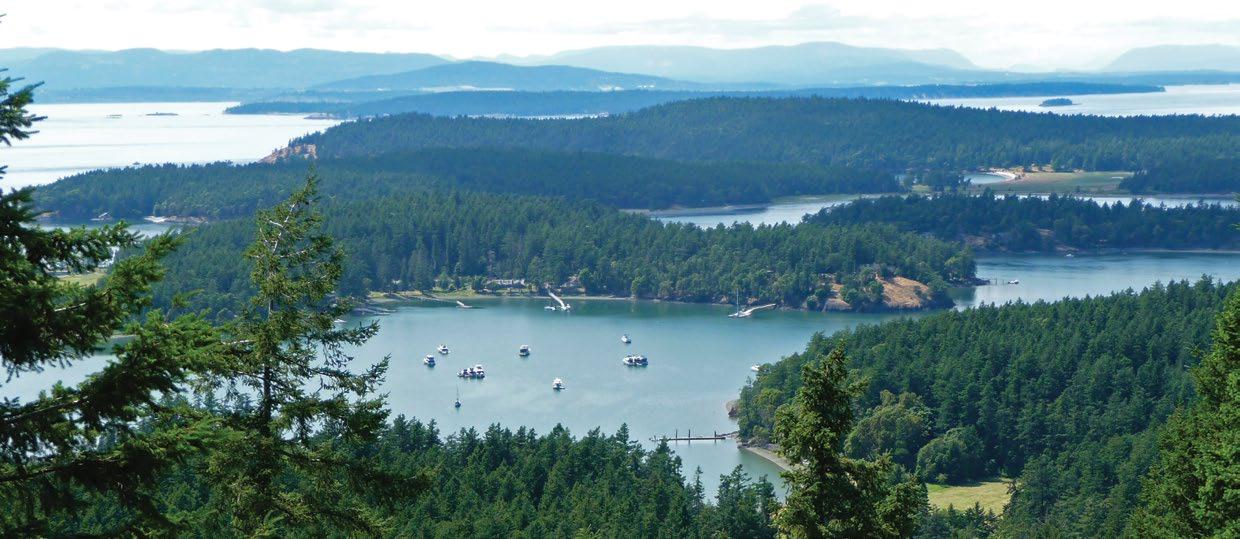
The San Juan Islands are one of the great treasures for boaters in the Pacific Northwest, and that is even more true for boaters who like to go hiking. The large number of state parks and forest areas mean hiking trails abound. Most of them have trail maps posted at a kiosk on shore and are well maintained and gorgeous to boot. I’m sure many readers will have their favorites, but please don’t be surprised if they aren’t here—space is limited so we can only discuss a few. We will share more favorite San Juans hikes in future installments.
For now, as we sail into cruising season with the longest days and warmest weather still ahead of us, it’s a perfect time to dream about and plan where we might hike during our waterborne adventures in the weeks to come. In the San Juan Islands, you can hardly make a bad choice.
CYPRESS ISLAND
Cypress Island lies on the east side of Rosario Strait, northwest of Anacortes. The Washington Department of Natural Resources (DNR) manages a network of trails covering most of the island that offers many interesting hiking opportunities. For the boater, there are three somewhat sheltered areas on the east side of the island where DNR has placed mooring buoys (free at last visit) and where anchoring is also possible. They are Pelican Beach, Eagle Harbor, and Cypress Head.
Our favorite is centrally-located Eagle Harbor, which has many buoys; though some of them would be too shallow on a zero tide for even a small sailboat. More than once, we have picked up a buoy only to move when one in deeper water became available. All the buoys make for somewhat tight anchoring, so be aware of your swing radius when dropping a
 by Michael Boyd
Photos by Karen Johnson
by Michael Boyd
Photos by Karen Johnson
HIKES FOR BOATERS 20 SAN JUAN ISLANDS
hook. Eagle Harbor is well sheltered from westerly winds, but is open to wakes from boats traveling Bellingham Channel, so I consider it an adequate, though not perfect, anchorage.
While the anchorage may not be ideal, the hiking can’t be beat. In Eagle Harbor, the best place for landing a dinghy is at an old log dump on the west side of the harbor. Once ashore, there is an information board with a map of the island’s trails. There are enough to keep you hiking for many days. We never spend less than two days here.
One favorite of ours is the Eagle Cliff Trail, but be sure to note that it is closed between February 1 and July 15 to protect sensitive species habitat. Hiking north past Duck Lake, the trail begins near the north end of the island and heads west, climbing on easy slopes to the top of a tall cliff overlooking Rosario Strait and looking due west to Obstruction Pass.

48º NORTH 20 JUNE 2024
Mount Baker from a Sucia Island hiking trail.
Locations of the great San Juan Islands hikes referenced in this article.
The payoff is superb on a clear, sunny day; less so when it’s foggy. It’s about 3 miles from your dinghy if you take the shortest route.
Another hike we can recommend is up to the Old Airfield—a runway built on a stretch of high ground during WWII, though never used. It is interesting to see how the runway is reverting back to nature and how long the process is taking; it’s been 80 years since construction and the area is still clearly recognizable as a runway. There are several trails leading to the Airfield, but our favorite is the Old Airfield Trail that starts on the east side of Reed Lake. Near the start of the trail, at the northeast corner of the lake there is a low, well hidden blind from which you can watch the wildlife coming to the shallow north end of the lake. Relax, eat lunch and enjoy the view. The airfield is about 2 miles from your dinghy via Old Airfield Trail, but slightly longer via other routes. The elevation gain is about 1,000 feet.
GARRISON BAY AND ENGLISH CAMP HISTORIC PARK
On the northwest side of San Juan Island, off Mosquito Pass, is the entrance to landlocked Westcott and Garrison bays. The entrance is narrow enough and shallow enough that, when we first started coming here, we tried to avoid low tides. Once inside, we prefer Garrison Bay and like to anchor close to the English Camp dinghy dock since our dinghy is human-powered. The bottom is soft mud and the holding is good. We’ve never had a problem here despite the large number of other boats sharing the bay with us during high season. But we are not here for the boats, we are here for the hiking.


Within the English Camp site there are a number of trails, some by the water, some inland. We always take the one to Young Hill with its great views of the Olympic Mountains and the nearby Canadian Gulf Islands. In itself, this is a wonderful hike. But continuing off the back of Young Hill takes you into a network of trails and old logging roads. We have hiked many of these trails but always come back to one that follows a logging road on the west side of Briggs Lake. Midway down the lake is a spur trail that takes you to a beautiful lake overlook with plenty of dragonflies and often bald eagles, osprey, herons, and other birds. No swimming though; the lake is the water supply for Roche Harbor. A loop hike of Young Hill and Briggs Lake is around 5 miles, depending on which trails you take. The climb of 650-foot Young Hill is the most strenuous part. We often plan a route that allows us to climb it twice.
SUCIA ISLAND STATE PARK
Sucia Island State Park may be the ultimate boating destination for many area boaters. There are many bays with mooring buoys and room to anchor. None of them are perfect—each is open to one direction—but all of them are safe in normal summer weather. Over the years, we’ve moored or anchored in most of them but we have stayed in Shallow Bay on the west side more times than any other, mostly because of the potential for spectacular sunsets. For us, no trip to the
San Juans would be complete without at least one visit to Sucia Island.
The island has many fingers and arms with trails that go out to the tips of most of them. Each has its own set of unique views and other charms. We’ve hiked them all, many times, but every time we go it seems we find something new. On one, we saw a newly emerged cicada with bright, sea green wings just getting ready to fly.
On our last trip, we even discovered a trail we had never hiked before; it wasn’t on the published map. It goes around the southwest shore of Shallow Bay and follows the shoreline southeast past Fox Cove to the Fossil Bay campground. It’s about 2 miles one way, a typical distance for Sucia Island trails.
The San Juan Islands are rich with hiking opportunities. All of the state parks and much of the public forest land have trail maps that can be downloaded from the web. A search before you leave home can equip you with maps for more than enough hikes for multiple future cruises. Enjoy!
Michael and Karen have been cruising the Salish Sea and beyond for more than 20 years, hiking every chance they get. For more resources for hikers visit their website at https://mvmischief.com/library/
For additional hiking information in this area Michael and Karen also recommend: Hiking the San Juan Islands by Ken Wilcox and https://sanjuanislandtrails.org/ describing the trails around English Camp.
48º NORTH 21 JUNE 2024
Reed Lake wildlife blind and lunch stop on Cypress Island.
Sucia Island sandstone formations have fantastic shapes.

CASTING OFF 22 A SHOCKING REVELATION SWITCHING-ON AWARENESS OF ELECTRICITY’S DANGERS
by David Casey
Between the classic movie Jaws and Shark Week, I used to think that sharks were the most dangerous entity in the water. I can recall fear eroding my desire to spend time wading in the water’s edge at the beach or dangling my hand over the side of a small motorboat. But after attending a recent workshop at my yacht club on marine electrical safety, I now fear that the silent killer of the deep is actually electricity.
In a devastating and tragic retelling of his son’s electrocution death over 20 years ago, electrical instructor Kevin Ritz described the invisible danger of leaking currents, poorly maintained systems, and incorrect wiring that can lead to injuries and fatalities.
When my wife Laura and I initially looked at our soon-tobe first boat—Columbia 28 Ariel—almost three years ago, the electrical system was the last thing on our checklist. While I was mostly unfamiliar with boats, I did know that they operated primarily on DC current while at sea, and I was quickly aware of the ubiquitous yellow shore power cord from the dock pedestal to the cockpit that brought in AC for the use of appliances like microwaves, heaters, and other electrical conveniences in the marina.
But I was unaware of through hulls, grounding wires, and the integration of DC and AC currents on a boat. Fortunately, my minor experience with wiring plugs and lights in my house gave me a foundation with which to follow Ritz’s presentation.
Ritz, who is a faculty member for the Northwest School of
Wooden Boat Building, was careful to remind everyone present to exercise the utmost caution and knowledge when working with marine systems. Far from learning how to troubleshoot or install a marine electrical system, I nevertheless left the evening seminar with powerful and important knowledge. Here are a few highlights that helped my understanding.
Not all electricity is created equal. There is a tremendous difference between direct current, DC, and alternating current, AC. Ritz jokingly asked if any of the attendees had ever stuck the two leads of a 9-volt DC battery on their tongue. All but two people sheepishly admitted to the foolish practice, myself included (I was about 10 at the time, honest!).
While DC current travels uniformly in one direction from the negative to the positive, alternating current does exactly what its name says: it alternates about 60 times per second between negative and positive. It creates an electric field that is actually measurable through insulated wires. In general, DC does not pack the punch that AC can deliver, hence the nonlethal scenario of the 9-volt battery on the tongue.
While DC current is not as dangerous as AC, Ritz reminded attendees that the two systems are connected through the ground, or bonding, wires on a boat. And as such, incorrect wiring, has serious and possibly deadly consequences were it ever to be the case that AC made its way through a dedicated DC wire.
Electricity flows from the more negative to the more positive. Why don’t birds get electrocuted when perched on a power line? While the wires have an insulating cover to create
48º NORTH 22 JUNE 2024
a shield, or “resistance” to use a more correct term, the real reason is that each tiny foot of the bird is in contact with the same voltage. Only when there is a difference in voltages will a current or flow exist. Given two different voltage potentials, electricity will find all conductive pathways to equalize that difference or return to its initial source of power.
Metaphors for electricity are helpful when trying to understand its complexity, although most are incomplete. Electricity is quantified in two main ways: voltage and current. Voltage is analogous to force, akin to the weight or mass of an object, or even a cistern of water. Imagine a piano or safe being hoisted to the third floor of a building, or a wooden water tower filled with 10,000 gallons of water. More weight or water is equivalent to more voltage, with both scenarios creating a potential for equilibrium. In the massive weight scenario, gravity is acting upon the object to return it to the ground. For electricity, the difference in voltage is the reason behind its movement along a conductive pathway.
Current, keeping with the water tank analogy, can be thought of as the size of a hose delivering the water from a giant elevated tank. A thin, small diameter hose is akin to a small current, or amperage (the strength of current measured in amperes). A large hose allows more flow, and therefore, more current.
Ritz reminded participants of downed power lines from a storm that could be in direct contact with a car. While electricity is technically flowing through the vehicle to the ground, a person in the car is safe as long as they don’t touch the ground and the car at the same time. Doing so would create a pathway from the high voltage wire through the person to the less negatively charged ground. Furthermore, because the electrical resistance of the ground is variable (due to density, composition, moisture etc.) a person fleeing the dangerous scenario of downed power lines should “bunny hop” their way to safety. Even the short distance between a person’s two feet as they walk is enough to experience a voltage gradient that can produce a lethal amount of current flowing through their body.
Electricity wants to return to its source, and will get there anyway that it can. Wiring systems, aka paths for electricity, “force” it to return to its origin. An electric plug has an incoming “hot” wire that can be traced back to its source through that yellow shore power cord. Following that path, you can see that the wire traveled from the supply pedestal on the finger pier after journeying from the transformer on the dock, and originating at the generation site way back at the power station.
The plug also has an outgoing wire that returns the electricity back to the source. When you plug in a hairdryer, for example, electricity flows from the hot wire through one prong of the plug, then through the appliance, either heating it up or supplying a magnetic field for the motor, and then out through the other prong, continuing back to its source at the pedestal, transformer, and generator.
The ground wire is the most important wire in an electric system. Beyond the incoming “hot” and outgoing “neutral” is a third wire in the electrical system, the grounding wire. Providing a safety backup, the wire is ultimately integrated with the bonding system through the negative terminal of the engine or the negative busbar on a boat. In the AC system for a

land-based house, the bonding wire is a ground wire that carries stray electricity literally to the ground, often through a copper stake driven a few feet into the ground, where the voltage can safely return to its source without incident.
In a boat however, ground wires are connected to the engine block where electricity finds a low resistance pathway back to its source via the AC safety ground of the shore power extension cord. The ground wire essentially provides another path through which current can flow back to its source, and when necessary, trips an overcurrent protection device. In a properly wired marine system, the additional current from

48º NORTH 23 JUNE 2024
AC grounding conductor not attached to vessel's grounding system.
Kevin pours salt into fresh water during his demonstration.
In this diagram, the red boat is using a non-grounded extension cord plugged into the yellow boat, leaking electricity into the water.

the ground wire will pop a breaker and shut off any dangerous electrical leakage into the water. If installed incorrectly, or not at all, electricity from the hot wire could find its way back to its source by way of through hulls, into the water, sending a deadly current rippling around the boat.
An extension cord with the ground “prong” removed is one of the most dangerous problems of an electrical system, and tragically, one that contributed to the death of Ritz’s son. Without the safeguard of a secondary wire that allows current to flow back to its source and pop a breaker, electricity will continue to flow unimpeded into the water.
Don’t swim in a marina, especially near the dock. Electricity that is “leaking’ from an incorrectly wired boat or a marina supply line will be the most dangerous closest to the source. While water conducts the electricity, it also provides resistance as the distance from the source decreases, developing voltage gradients or zones of different voltage.
Pipes attached to finger piers have the potential to carry stray electricity, as do through hulls and propellers of boats. The closer a swimmer is to those objects, the greater the voltage they might feel. Ritz described the horrifying feeling of being

in water with an electric current flowing through it. Our muscles seize up, creating the sensation of trying to swim in wet cement. As the current increases, our heart no longer functions.
An electrical voltage differential of about 2 volts per foot can be lethal. As a simplified clarification, if a 120 volt hot wire were to be placed in a body of water, the voltage charge would be greatest at the location of the wire’s entry point. Moving a few feet away in any direction, the voltage would drop due to the water’s resistance, let’s say to about 110 volts. (There is some variation in this amount, due to water salinity, temperature, and other factors.) It is that voltage differential that is lethal. Remember, electricity flows from a higher voltage to a lower one. To simplify the example, imagine If a person’s right arm were located in the 120 volt zone, and their left in the 110 volt zone. The variation in voltage would be more than enough to stop their heart.
Ritz concluded his talk with a demonstration to clarify the point. In a “never try this at home” experiment, he modified the cord of a standard hair dryer by cutting the neutral wire, separating it from the hot wire, and stripping both ends. He then plugged in the cord, and placed both ends of the neutral wire (technically, the neutral emanating from the hair dryer is carrying current) into a plastic tub of tap water, and turned on the hair dryer. While the water in the tub was electrified, high resistance in fresh water created an extreme voltage gradient, resulting in a drop in voltage between the ends of the two wires and a non-functioning appliance. He then poured in salt from a grocery store container. As he poured more and more, decreasing the resistance and therefore increasing the conductivity, the power to the hair dryer increased, evidenced by the louder noise of the blower and the rising temperature of the heat coming from the nozzle.
As the small crowd expressed their amazement at the conductivity of the water, Ritz informed us that the human body has more salinity than the final percent solution in the tub (even more than sea water), allowing it to essentially act as a copper wire between any voltage differential. Another gasp from the crowd filled the room.
I left the presentation far more respectful, if not fearful, of the ever present potential danger of electrical systems. My approach to any wiring project on Ariel will now include a thorough examination of my ability to successfully troubleshoot or monitor the system. I am far less likely to jump feet first into an electrical upgrade, adhering to the philosophy of when in doubt, play it safe, and even in the boating world, always stay grounded.
David Casey is a retired math teacher and semi-professional woodworker and bass player. He plans on using his retirement to build a small sailboat and a kayak, and to explore the waters of southern Puget Sound.
From the author: “Many thanks to Kevin Ritz for his contribution to this article. His knowledge, instructional skills and commitment to safety cannot be understated.” If you are interested in learning more about marine electrical safety, check out his course at Northwest School of Wooden Boat Building: https://nwswb.edu/systemsintensives/
48º NORTH 24 JUNE 2024
AC current creates an electric field that is actually measurable through insulated wires. Photo by Kevin Ritz.



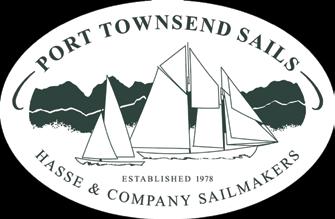

48º NORTH 25 JUNE 2024 Terra Nova’s Destination was the Northwest Passage... What is Yours? Terra Nova’s Destination was the Northwest Passage... What is Yours? PortTownsendSails HasseandCompany 919HainesPlace PT,WA98368360.385.1640contact@ptsails.com Port Townsend Sails Hasse and Company 919 Haines Place PT, WA 98368 contact@ptsails.com 360.385.1640 Mobile Fuel Polishing Serving The Entire Pacific Northwest • 360-808-0505 Seventh Wave Marine www.seventhwavemarine.com seventhwavemarine@olypen.com Fuel Filtering...Tank Cleaning (Water, Algae, Sludge and Particle Removal Service) Changing filters often? Don't let bad fuel or dirty tanks ruin your next cruise! Whether you're cruising the Pacific Northwest, heading for Alaska, Mexico or around the world, now is the time to filter your fuel & tank before trouble finds you out there! RACE TO ALASKA Sat, June 8 3-7 PM NEW LOCATION The Commons at Northwest Maritime Center Port Townsend, WA FOOD TRUCKS MUSIC DANCING BEER GARDEN FREE TATTOOS RACE BOATS BOATSHOP OPEN HOUSE R2AK.COM
SHIFTING GEARS 26
PHANTOM RIVER

EXPLORING LAKE WASHINGTON’S EARLY WATERWAYS
by Lisa Mighetto
No one told me there would be spiders. When I moved my boat from saltwater to Lake Washington a few months ago, I expected to make adjustments, but the spiders were a surprise. So many have made themselves at home in my cockpit that my husband Frank and I have named the friendlier (or bolder) stowaways. When it’s time for a sail we ask each other, “How about it? Want to take the spiders cruising this weekend?” I calmly flick away the gossamers as my friends chat to us in the cockpit, cheerfully unaware of what is dangling above their heads. In more than 20 years of sailing the South Sound, I had noticed only a few of these hitchhikers, all hiding in the anchor locker.
Boating on the Lake Washington system is different from saltwater in many ways. When anchoring around Olympia, I could feel the tidal shifts in the hull. Changes in water color often signaled a river or stream ahead. Currents collided around islands, sometimes creating foaming torrents and whirlpools that I call “swirlies.” Logs and lines of floating leaves—green in spring and gold in fall—hinted at tidelines along heavily forested shorelines. Lake Washington waterways have their own rhythms, revealed to cruisers who look closely.
Boating here is mostly an urban experience, made possible by extensive engineering projects in the early twentieth century. After completion of the Lake Washington Ship Canal in 1916, Lake Union became “the watery heart” of Seattle, according to guidebook authors Jo Bailey and Carl Nyberg, who found it “busy, noisy, and endlessly fascinating, day or night” (Gunkholing in

South Puget Sound). Though written in 1997, these words remain true today. Lake Union offers mariners one of the best views of the city, featuring gleaming skyscrapers and the iconic Space Needle, along with colorful houseboats (so far, a bright purple one in Portage Bay is my favorite), a variety of restaurants with docks, multiple marinas and yacht clubs, and countless industrial sites, including boatworks—all concentrated in a relatively small area.
Evening and weekend cruisers are sure to have plenty of company, surrounded by sailboat races, floating hot tubs, tour vessels, standup paddleboards, canoes, kayaks, and all manner of power boats, many of which are continually engaged in a dodging dance with seaplanes. After the quiet beauty of the South Sound, it is sensory overload. “This is crazy,” Frank commented on our first cruise here, dazed as we zigzagged through a gauntlet of watercraft.
48º NORTH 26 JUNE 2024
Vintage postcard, canoeing on the Black River, early twentieth century.
Map showing the rerouting of rivers, including current and historical channels. Photo courtesy of Waterlines Project, Burke Museum.

Map showing location of parks on Lake Washington, along with the site of the Black River.

We prefer the southern end of Lake Washington, with its slower pace and storied shoreline. Yet the most striking thing about this area is what is no longer here. For centuries, a complex network of rivers and streams converged at the southern end, creating a waterscape lined with trees and marshy vegetation, thriving with salmon. The Black River was a central feature, described in numerous historical accounts as a “vein,” “artery,” and “heart” of Lake Washington and the lifeblood of Seattle, as it once formed the only outlet to saltwater. In keeping with this anatomical metaphor, I think of the Black River as a lost limb, one that is now gone but occasionally makes its presence felt. The tale of its fate is one of the most compelling in our region’s history.
AN ENCHANTED RIVER
Mariners turning south from the ship canal will find a bucolic shoreline, passing stately residences with large manicured lawns and lavish flower gardens. Several parks, including the Arboretum, Luther Burbank, and Seward, offer lush, green spaces. Gene Coulon Park at the southern end of the lake includes docks and a boat launch, providing a pastoral break from the industrial setting of the Boeing Plant and the paved runways of the Renton Municipal Airport. For thousands of years Lake Washington—once called “Lake Duwamish”—flowed south into the Black River at this point.
Named for its dark, organic-rich water, the Black meandered south until it joined the Cedar River flowing from the east. The combined waters moved west, where they joined the White River, which flowed from the glaciers of Mt. Rainier into the Duwamish River. This serpentine river system twisted its way northward,
eventually emptying into Elliott Bay and providing the only link from Lake Washington to saltwater. High tide slowed the flow of the Black and, during periods of flooding, the river backed into the lake, creating the strange spectacle of water moving in opposite directions. In Chinook jargon, the Black was called Mox La Push, “the river of two mouths.”
The Duwamish People lived along the banks of the Black River for thousands of years. Using weirs, they fished the bend in the river where the water turned westward, creating a deep pool “loaded” with salmon in the summer. Native canoes traveled this ancient route northward up the Duwamish River, to reach the clams and oysters in the tidelands of Puget Sound. The forested hills, dark with tangled vegetation, inspired stories of supernatural beings and events.
During the nineteenth century, non-Indigenous settlers quickly recognized the potential of the Black River. Before the arrival of rail lines and roads, the region’s waterways carried coal, lumber, and farm products from Southern Lake Washington to Seattle, with steamers traveling the Black and Duwamish during periods of high water.
It did not take long for the Black to attract tourists and recreational boaters, who flocked to the resorts appearing on its banks. Pacific Sportsman, a regional outdoor

Clad in long white dresses, these women canoed through the lilies at the mouth of the Black River. A series of drawings and photos appeared in Riley H. Allen, “Canoeing From Lake to Sound,” Seattle Post-Intelligencer, Sept. 9, 1906.
48º NORTH 27 JUNE 2024



Kayakers, sailors, and powerboaters cruise through the Montlake Cut on a busy weekend. This gothic collegiate style bridge mirrors the architecture of the UW and marks the easternmost point of the ship canal.
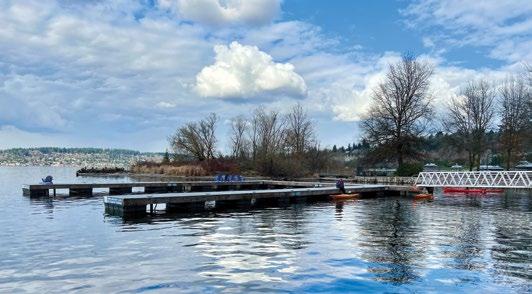
journal, advertised the mouth of the river as an excellent fishing ground for kokanee (landlocked sockeye). “At spawning time they crowd each other in thousands,” one article promised in June of 1905, providing “good sport for the bait fisherman.”
The following year, the Seattle Post-Intelligencer featured the Black River as an idyllic place for a canoe trip. “You enter … from Lake Washington at the southern end of that body,” the author reported. ”The waters of the river are deep and slow and placid, flowing silently over a black and boggy bottom out of a bay grown thick with slender reeds, and upon whose glossy surface water lilies rest their broad green pads” (Sept. 9, 1906). Photos and drawings of canoes carrying women in long white dresses and fanciful hats underscored this poetic account. These ladies languidly trailed their fingers in the water as they floated past dogwood blossoms and wild currant, while Douglas-firs, cedars, maples, and cottonwoods covered the hills lining the river. Examining the illustrations closely, I half-expected to see woodland fairies and water sprites in the background. Who wouldn’t want to canoe through such a dreamy setting?
A RIVER LOST
For all its charm, the Black River posed a problem for deepdraft boats. Shoals, sandbars, and snags obstructed the route, while tidal fluctuations and meanders in the waterway slowed the progress of commercial vessels. During the 1890s a 46-foot steamer ironically named Success foundered on a trip down the Black. It took a team of horses and the aid of Indigenous canoeists to pull the boat over sandbars covered by less than 3 feet of water. The passage down the Black could be “a hell of a job,” recalled one steamboat captain. “Getting a line on a stump or tree was not an easy way to make a living especially when you are wet up to your neck” (“Black River Passage,” The Sea Chest, June 1, 1974).
These navigational hazards were particularly inconvenient given that the Black River was the only link between Lake Washington and Puget Sound. As early as the 1850s, Seattle’s boosters advocated constructing a canal to connect Lake Washington to the Sound through Lake Union, so-named because it would one day join these two bodies of water. When Washington became a state in 1889, one of the first acts of the legislature was to petition Congress for a feasibility study for the canal. The US Army Corps of Engineers, charged with improving navigation on the nation’s waterways, conducted the survey, pronouncing the Black “a very tortuous stream.” The rivers in the Lake Washington system had always been winding, unruly, and unpredictable, flowing in all directions and frequently flooding and changing course. While the Duwamish People adapted to these conditions, many of the new, non-Indigenous residents sought control and efficiency, at least in the short-term.
By the early twentieth century, city leaders had mustered the political will and funding to reshape the river system with a series of massive projects. Work on the Lake Washington Ship Canal began from 1909-1911, culminating with the opening of the locks in 1917, which allowed the orderly flow of marine vessels through the channel from salt to freshwater. Lake Washington now discharged through the ship canal rather than through the Black River. As the level of Lake Washington lowered nearly 9 feet, water drained away from the Black.
48º NORTH 28 JUNE 2024
Historical. Smithers’ Landing on the Black River, ca. 1880, showing Duwamish-style canoe. Photo courtesy Renton History Museum.
Kayakers dock at Gene Coulon Park in Renton, near the site of the old Black River.
Looking south on Lake Washington, boaters are rewarded with spectacular views of Mt. Rainier.
“The waters just went down, down,” recalled Joseph Moses, one of the last Duwamish to live along the river, “until our landing and canoes stood dry and there was no Black River at all.” The receding water left salmon trapped in isolated pools in the riverbed. Moses remembered people coming “from miles around, laughing and hollering and stuffing fish into gunny sacks.” Without fish or water, Indigenous residents were forced to leave their homes, while the recreation business on the Black eventually disappeared (David M. Buerge, “Requiem for a River,” Seattle Weekly, Oct. 1985).
As engineers blasted the canal and the Montlake Cut, related projects in the early twentieth century similarly reshaped Seattle’s shoreline. The Denny Regrade moved mountains of soil from Denny Hill to the tidelands around the Duwamish River, allowing this waterway to be filled and straightened. Meanwhile, rivers in the southern end of Lake Washington were redirected. The White River, which once joined the Green before flowing into the Black and Duwamish, flooded in 1906. A large log and debris jam moved the White southward, and construction of a permanent diversion wall ensured that the river would continue to flow in this new direction. In 1912, the City of Renton diverted the Cedar River, which had flooded the previous year, so that it bypassed the Black and emptied into Lake Washington. Within a few decades, the natural waterways of the Lake Washington system had become barely recognizable.
Today, the ship canal is mostly used for recreation – and the volume of traffic on a summer afternoon indicates that many boaters continue to benefit from early twentieth-century engineering. Who can say if my sailboat would now be moored on Lake Washington had this massive reshaping not occurred a century ago? And yet, as I sail in front of Gene Coulon Park on a lake transformed, it’s hard not to mourn the losses, including the displacement of Duwamish People, destruction of prime salmon habitat, and disruption of what was once a boating and fishing paradise.
Remnants of the Black River still appear in the form of scattered reeds along the shore, while echoes of the old lake persist during periods of flooding. Modern boaters are connected to past Lake Washington voyagers in our love of being on the water and the joy of paddling, rowing, sailing, and motoring through such a scenic setting. I am still learning to recognize traces of earlier eras as I explore this freshwater system. Meanwhile, I am adjusting well to boating with spiders.
Lisa Mighetto is a historian residing in Seattle. Her interest in the Black River dates from 2005, when her article “The Strange Fate of the Black River” was published in Journal of the West. She is grateful to the Renton History Museum for photographs and assistance in her research.
Union is “busy, noisy, and endlessly fascinating, day or night.”
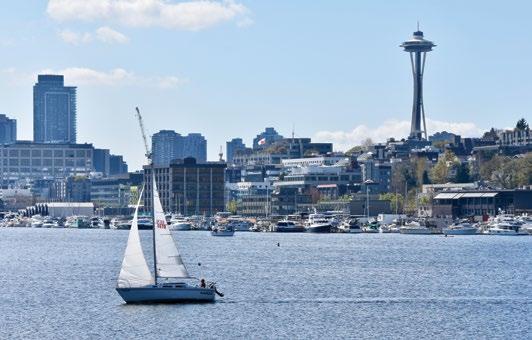
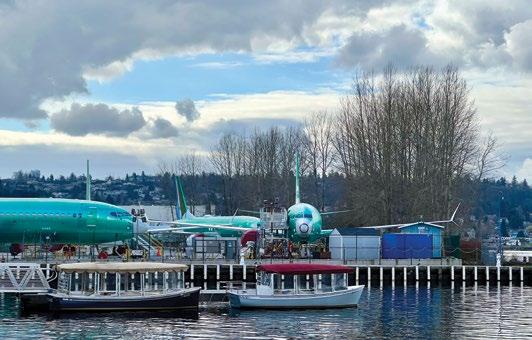
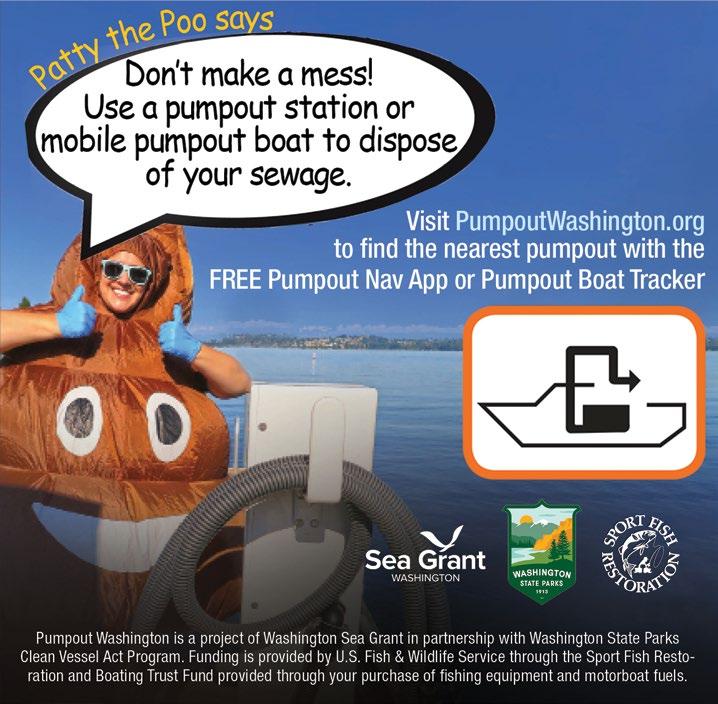
48º NORTH 29 JUNE 2024
Lake
Shiny new planes at the Boeing Plant in Renton, near the site of the old Black River.
SEA FEASTS OF BRITISH COLUMBIA
FINDING
JOY IN CREATING MEALS FROM THE BOUNTY OF THE WATER
 by Andy Cross
by Andy Cross
Raising the oars from the water, I let our dinghy ghost ahead into the small cove surrounded by moss covered rocks and tall conifers. A bald eagle wheeled high above the island group and, besides the rustling of water from underneath the boat and the drip from the oars, not a sound could be heard. Sitting on the stern seat, my son, Porter, didn’t stir and I could tell he was taking it all in, too. Soon, the silence was broken as a blue heron’s wings burst into action, taking it in flight across the anchorage.
Scenes like these were a regular occurrence during our time in British Columbia’s Octopus Islands, and we reveled in the quiet moments, beautiful scenery, abundant wildlife, and few other humans. In the mornings we awoke to birds singing. Bald eagles were a constant source of entertainment and any number of gulls, ducks, mergansers, geese, and raccoons graced us with their presence. Beyond this company, the clear water underneath our boat was teeming with crabs, fish, oysters, clams, mussels, sea anemone, and starfish.
This is where our family first started to feast on what nature provided, which would be a theme throughout our summer in B.C.—cruising counter clockwise around Vancouver Island and trying new recipes created with local delicacies as we went. Since then, when we visit a new cruising paradise, we try to discover something unique and delicious to eat that perfectly fits that particular locale. Cruisers throughout the PNW are profoundly fortunate to have yet another way to connect them
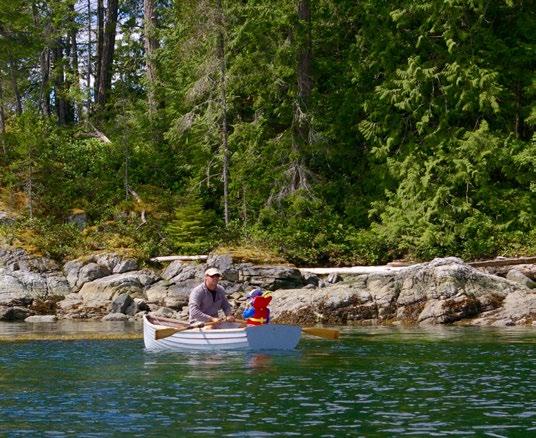
to these extraordinary places, and enjoy some gourmet natural offerings along the way.
The crabs were so plentiful in the Octopus Islands that Porter and I checked our crab trap after only two hours and found four large keepers picking at our bait. After soaking in this wilderness spectacle, we rowed them home to our Grand Soleil 39, Yahtzee, where we cooked, cleaned, and devoured the succulent meat in the cockpit. With the leftovers, my wife Jill decided to work her culinary magic and turned the rest of the meat into crab stuffed mushrooms and crab mac ‘n’ cheese. Delicious.
48º NORTH 30 JUNE 2024
The author and his son, Porter, row through the Octopus Islands.
While crab is by far one of our favorite foods to eat while cruising the Salish Sea, oysters and mussels are probably a close second. I have to begin with a warning here, though. It is imperative that you take heed of all shellfish closures (go to www2.gov.bc.ca for more information and closure maps) so you don’t risk getting sick. If there are no openings where you plan to cruise, take advantage of the quality seafood markets throughout the Pacific Northwest where shellfish can be found.
During our circumnavigation of Vancouver Island, we had the ability to harvest shellfish in various places. One of the most memorable was south of the Brooks Peninsula in the Bunsby Islands. We’d arrived after a foggy and rainy sail from Columbia Cove and were delighted to have sunny skies and light breezes.
On our way into the islands, we noticed a beach set among the rocks that we were determined to find, so the following morning we set out in our kayak and dinghy to do just that. Weaving our way out through the islands over waving forests of kelp and reefs teeming with sea life, we came upon a beautiful white sand and shell beach protected from the nearby ocean swell.
Strung between rocks and islets like a pearl necklace and backed by tall, green mountains on one side and the expansive, blue Pacific Ocean on the other, the beach and tidal flat was exactly what we were looking for. A beachcomber’s paradise was there to explore and we spent the morning tromping through tide pools full of an immense quantity and array of life, enjoying a snack on the beach, climbing over rock formations, and swimming in the gin clear water. We also picked mussels, oysters, and nodding onion (similar to green onion) to add to our dinner menu centered around grilling our catch of the day.
CRAB STUFFED MUSHROOMS
Ingredients:
6 to 12 large mushrooms
1/4 cup butter
1 clove garlic, minced
4 green onions, minced
1 cup soft bread crumbs
1 tablespoon chopped fresh parsley
1 cup cooked crab meat (preferably fresh)
1 tablespoon mayonnaise
1 tablespoon fresh lemon juice
1 teaspoon salt
1/8 teaspoon freshly ground pepper
2 tablespoons grated Parmesan cheese (we used cheddar, which was delicious!)
Directions:
Wash mushrooms; remove caps and set aside. Finely chop stems and set aside.
In a medium saucepan, melt butter over medium heat. Saute garlic, onion and mushroom stems until softened, about 5 minutes. Remove from heat and set aside.
Preheat oven to 425 degrees. Stir in bread crumbs, parsley and crab meat. Gently fold in mayonnaise, lemon juice, salt and pepper.
Stuff mushroom caps with crab mixture and place on greased baking pan. Garnish with cheese. Bake for 10 minutes or until golden. Serve hot.

48º NORTH 31 JUNE 2024
A true delight, crab stuffed mushrooms were a hit with the Yahtzee crew.

GRILLED OYSTERS
Ingredients:
10 to 20 oysters
1/4 pound butter
4 cloves garlic, minced
1 tablespoon capers
1 tablespoon finely chopped Italian parsley
1/2 cup bread crumbs
1 cup freshly grated Parmesan or Romano cheese
Directions:
Preheat grill. In a small saucepan, melt butter and sauté garlic about 1 minute. Add capers and parsley; heat through. Cover and set aside. Place oysters, cupped-side down, on grill about 4 inches from heat source. When liquid in oysters begins to boil and the shell lifts open (about 5 minutes) remove top shells and return oyster to grill.
Brush butter mixture liberally over oysters. Sprinkle with bread crumbs and top with cheese. Cover and cook for 5 more minutes. Serve.

Plunging from the sky to the sea, the Coast Mountains of British Columbia enveloped us as we sailed up Tribune Channel on a gentle westerly towards Watson Cove and Kwatsi Bay. Waterfalls tumbled over rock faces high above, cascading towards the thick, green forests and clear sea below. Cell service had long since faded in our wake and, with the sun breaking through the clouds, it seemed yet another week of grand adventure was upon us.
When we nosed Yahtzee’s bow through the narrow entrance to Watson Cove on a Friday afternoon, the sound of a waterfall could be heard over the engine and cliffs rose dramatically skyward on either side. Our mast seemed like a minuscule alloy toothpick in the grand playground before us and, with much to explore, play we did. We also gathered part of the necessary ingredients for one of our next meals—sea asparagus salad.
While cruising through British Columbia the prior summer, we’d noticed the green, string-looking plant known as sea asparagus that grows wild along the many tidal shores that we like to poke through with the boys. A boat buddy had pointed out that the plant is edible and when we came across it as a prepared salad in the grocery store in Campbell River a couple weeks before, it was a sign that we finally needed to harvest it and make it on our own.
Sea asparagus only has a 6-week harvest period (all of June and early July) and, conveniently, we were in it. I stayed home on Yahtzee with Magnus while Jill and Porter went ashore and picked a bunch, trying it raw as they went. The asparagus has a salty flavor with a nice crisp snap that makes it a tasty green to add to your meals or as a salad. Jill and I enjoyed it and both boys ate every bit that was on their plates. Give it a try!
SEA ASPARAGUS GRILLED SALAD
Ingredients:
1 cup mixed bell peppers sliced 1 inch wide
1 cup fresh sea asparagus
2 ripe peaches or nectarines
2 teaspoon olive oil
1 teaspoon balsamic vinegar
2 teaspoon extra virgin olive oil
pinch of oregano
salt and pepper to taste
Directions:
Heat the BBQ to medium. Coat the peppers and peaches/nectarines [whole] in 1 teaspoon of olive oil and season with salt. Place on the grill . Put the sea asparagus on a foil sheet and drizzle with the other teaspoon of olive oil. Wrap in the foil and place on the grill for 10 minutes. Cook the peppers and peaches/nectarines for 10-15 minutes until done. Slice the peach/nectarine into bite sized pieces. Place in a bowl with the peppers and sea asparagus. Toss together with the balsamic vinegar, extra virgin olive oil, oregano, salt and pepper.
48º NORTH 32 JUNE 2024
Magnus and Porter enjoy a snack on the beach in the Bunsby Islands.
Grilled oysters were on the menu anywhere the author could harvest them.

When we arrived in Barkley Sound on the southwest coast of Vancouver Island, we were fortunate to buddy-boat with our friends Ryan and Autumn on their Wylie 31 Velella for two weeks. There were many highlights during our time together, but one of the most memorable was collaborating for meals each night while rafted up.
rounding the top of Vancouver Island, the weather was ideal to hop

With an almost intentional lack of a schedule to sail to, we sat down with charts during our nightly gatherings and plotted out one day at a time. To us, that’s how life should be lived on a summer cruise. Some days we’d create a loose plan, only to chuck it later on in favor of a different idea or destination. Our meals were also combined without a regular routine.

For the most part, we’d compare what needed to be eaten from the boats’ fridges, break out the cookbooks and make a plan for the evening’s collaborative meal. When not in the Broken Group—where harvesting fish or shellfish is off limits—we’d turn to the sea for our protein. Magnus and I collected a large bucket of oysters that lasted for several days and Velella and Yahtzee were often found trolling for fish before setting sail for our next anchorage. One day Velella provided salmon, and the next Yahtzee hauled in enough rockfish to feed the crews tacos. Needless to say, we ate well, and this rockfish taco recipe was a favorite.

Evergreen-studded islands, abundant wildlife and peaceful anchorages. Experienced or new to boating, we can help you discover the joys of cruising the beautiful San Juan Islands! Beginner to advanced liveaboard courses. Sailboat and powerboat bareboat charters. Guided otillas too!
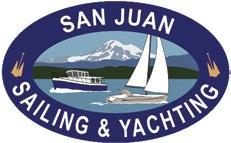
48º NORTH 33 JUNE 2024
sanjuansailing.com • 360-671-4300
Cruise the San Juan Islands! INSTRUCTION • BAREBOAT CHARTER • BROKERAGE The
tide pools
sea asparagus.
south.
boys pick through
while searching for
After

Homemade tortillas and fresh ingredients made rockfish tacos a favorite summertime meal.
Cruising the waters of the Inside Passage from Washington to Alaska is truly a delight and is something that our family feels fortunate to have experienced so intimately. Little did we know when we set out on this summer of cruising around Vancouver Island that making meals from the resources we found along the way would be such a big part of it. But place by place, bounty by bounty, feast by feast, we ate of the waters and strengthened our already profound ties to the cruising grounds of the Pacific Northwest. If you don’t already, we highly recommend creating your own culinary classics from what the sea gives you. Try these recipes and others—you won’t be disappointed!
Andy Cross is the editor of 48° North. After years cruising the Pacific Northwest and Alaska with his family aboard their Grand Soleil 39, Yahtzee, they sailed south and are currently in the Caribbean Sea. You can follow their adventures at SailingYahtzee.com
Note: Several of the above recipes were adapted from the cookbook “San Juan Classics II” by Dawn Ashbach and Janice Veal.
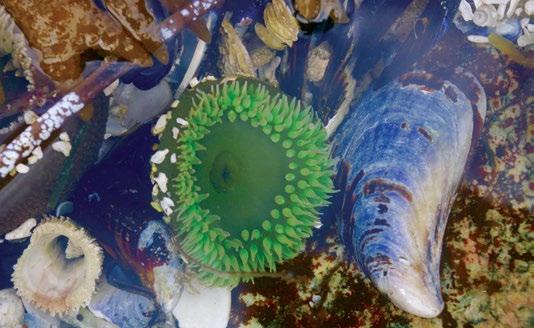
ROCKFISH TACOS
Ingredients:
3 tablespoons tequila
1/3 cup lime juice
1 teaspoon salt
2 cloves garlic, minced
1 tablespoon olive oil
2 large rockfish filets
12 cherry tomatoes
1/2 red onion
2 tablespoons chopped fresh cilantro
1 cup of corn
1 avocado, sliced salt and pepper to taste
Directions:
Catch (or purchase) a rockfish or two and fry up some homemade tortillas. Prepare the marinade by mixing the tequila, lime juice, garlic and olive oil. Put the rockfish filets into a Ziplock bag and cover with the marinade. Let rest for up to three hours. Prepare the salsa by halving the tomatoes, finely dicing the onion and chopping the cilantro. Add salt and pepper to taste. Grill the fish and serve in homemade (or store bought) tortillas topped with the salsa and slices of avocado.
PRO TIP: A dollop of sour cream really makes this recipe delicious—add 1 to 2 teaspoons of white vinegar, lemon or lime juice to a can of media crema and you’re good to go. Or buy sour cream if available.
48º NORTH 34 JUNE 2024
Tide pools area a cornucopia of sea life throughout the Pacific Northwest.





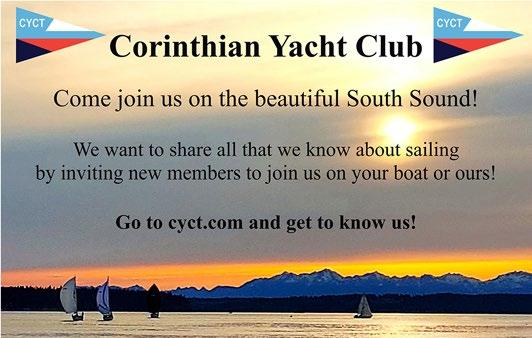



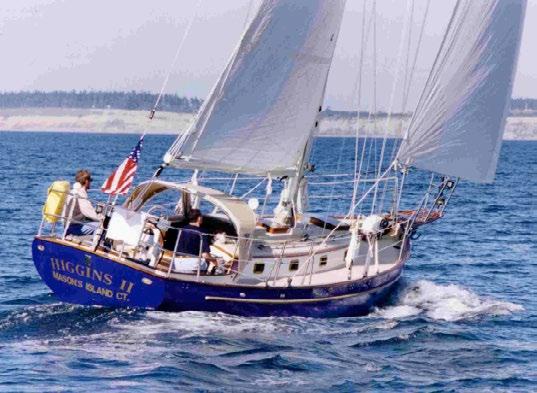


48º NORTH 35 JUNE 2024 Cape George Marine Works Inc. 1924 Cape George Rd. Port Townsend, WA 98368 360.385.3412 Cape George 34 www.capegeorgecutters.com Follow the law to protect Southern Resident killer whales Starting in 2025, boaters must stay 1000 yards away from Southern Resident killer whales. The laws apply to all motorized and non-motorized vessels, including kayaks, and violations can result in state fines of over $500 (RCW 77.15.740) 1/2 nautical mile = roughly 1,000 yards For more information visit www.bewhalewise.org Slow Down if you see a Whale Warning Flag or other signs that whales may be nearby such as tail fin blow and follow the required distance and speed limits shown in the graphic on the right. Report Violations: 1-800-853-1964 or online at www.bewhalewise.org
by Joe Cline

SEATTLE’S NEWEST CIRCUMNAVIGATOR
PART ONE OF DAVID LINGER’S ROUND-THE-WORLD STORY
David Linger and I started at the end. “The flares only burn for about 30 seconds, and I saw how another competitor held two in one hand and pulled both tabs at the same time. There’s a little bit of slag coming off of ‘em. You’re in the back of the boat, you don’t want to stick it in the sail, you don’t want to drop the slag on the Starlink antenna or yourself, and then you’re trying not to fall in. For the last five months you’ve been holding on with one hand, and Marco is yelling at me to look at the camera.”
Dave’s vivid description of the photo shoot as he approached the finish line of the Global Solo Challenge (GSC) in
A Coruña, Spain set the tone for our delightful and fascinating conversation to follow. Due to the recency and scale of his achievement, this local sailor seemed to be reflecting on his enormous adventure in component parts. “It still hasn’t totally sunk in yet,” he remarked.
“What was going through your head when you crossed that finish line?” I asked.
“If I crack off another 5 or 10 degrees, I’m going to outrun the RIB.” Dave continued, “The motif that we bring to any regatta is, ‘Sail every race, and try not to look like a fool getting on and off the dock.’ So, I finished the event and I’m already thinking about whether I’m going
to go straight into the slip, or am I going to back in, or…? Oh, there’s my girlfriend, ‘Hot damn!’”
Seattle’s most recent circumnavigator —his, an epic 175-day voyage completed solo and very nearly non-stop (save for a brief pause to repair a broken boom just after Cape Horn) on his Class 40 sailboat, Koloa Maoli—sat comfortably on deck of his floating home on Lake Union when I joined him just over a month after he completed his voyage.
Dave’s home has a rustic maritime modesty that is paired with its luxurious location at the end of an Eastlake dock, with the glistening urban waterway providing what he called, “complete
48º NORTH 36 JUNE 2024
Photo courtesy of Marco Nannini and the Global Solo Challenge.
problematic distraction.” He’s been coming to this house since he was 6 years old, and it has been his for more than 15 now. The place struck me as perfectly suited for its unassuming owner whose quirky humility and authentic character are balanced, now more than ever, by the rarified air of spectacular accomplishment and international acclaim as a finisher of a singlehanded round-the-world sailing race.
Dave described himself as “quietly competent” and “deeply read.” Each of those qualities are continuously evident, and I’d add that Dave is all heart, too. Still focused on the closing days of his voyage, he was soon choked up and wiping away a couple of tears. “Two days before I finished, the competitor in the Cap Martinique Race, Phillipe, got washed off his boat and died. And the next day, I sailed past where he had lost his life. I made a little toast to him and his family. That was super hard.” At this and other moments of significance, Dave—who has been sober for many years—offered a bit of his girlfriend Lillian’s bottle of rum to the ocean, which he carried for such occasions. “It was a very long three days coming up the coast. You see the lighthouse, and you’re like, ‘Yeah, I f*cking did it.’” Yes you did Dave, you sailed around the world singlehanded. Whoa.
STUDENT OF HISTORY
Any discussion of Dave’s recent achievement understandably begs the question, “Why?” Dave shared a lot of ideas about how he came to this, and repeatedly mentioned that he’d wanted to sail around the world since he was a child. But even understanding that desire reveals a person dedicated to learning, reading, and honoring what’s come before.
National Geographics dating back to the 1920s. Thousands of them. I grew up reading Robin Lee Graham, the author of Dove, because that was serialized in National Geographic. I thought it was super cool that this kid was going sailing across the ocean.” Dwelling on this, Dave paused for a moment, clouding up once more. “Guzzwell,” he said plainly, “Trekka.” He nodded, trailing off.
As we talked, Dave’s fluency in so much that has come before was on constant display—local and global, regarding boats and the maritime world and many, many things outside of it. This profound connection to the past matters so much because it ties Dave’s voyage not only to his childhood dream, but to those adventurers who offered him a lifetime of inspiration.
into competitive sailing in high school, qualifying for and sailing the Sears Cup in Cleveland. And, thanks to a victory at the C-Lark Junior Championships, he sailed the Youth Championships in 1979 and 1980.
By that time, he had also begun working in the industry. “I started washing boats for York Yachts in Fremont, which was the San Juan dealer and the Nonsuch dealer. One thing leads to another, somebody asks you to hold the bolt while they put a piece of deck hardware on.” He moved on to work for Sailboats Northwest, the original J/Boats dealership. He got to know riggers and divers. He says, “then you get a job working at a power boat dealership and learn about that.” During our conversation he referred to his work Kvichak Marine and West Marine, among a number of well known local maritime institutions.

A MARITIME LIFE
Dave grew up on Lake Union on the northside of Queen Anne hill. “I wasn’t interested in superheroes growing up because I was able to read about people that had adventures. I always wanted to go on an adventure. Eric Tabarly, Maud Fauntenoy, Clare Francis, Chichester’s articles—there’s a whole list. Before I was born, my parents already had a library of
In work and play, Dave Linger has spent the majority of his life involved with boats and the water. “I had a little pram that my father and I built when I was in grade school, and started sailing then. I learned a lot about sailing at the CYC sail school at Leschi. Later in high school, a group of my friends had racing lessons at Seattle Yacht Club.”
Dave raced El Toros on Green Lake, including a 65-boat North American Championship there. He got further
Wherever his work took him, Dave never stopped sailing. “I got a Santana 20, raced on the Sound, raced it Duck Dodge. And I raced on my father’s boat—he had a Coronado 25, and then the boat right here (gesturing to the dock behind him) the Ranger 33 has been in the family for 40 years.”
In the 1980s, Dave started doing deliveries. Though one of his first discoveries was that he gets seasick, his appetite for ocean sailing was officially whetted. That first delivery was from Hawaii to Puget Sound on Chimera, a tiller-driven two-tonner that had just sailed the Vic-Maui race. Other takeaways from that first trip still reverberated on his circumnavigation: “I learned if it’s windy, hold on. Sail strong, fast boats on the ocean. The tiller means you learn a lot about balance, that the boat shouldn't be cranky. Don’t pinch when you’re on the ocean, keep the bow down because you’re going to pound less.”
In the years since, Dave has continued to keep his offshore steel sharp. In addition to many ocean deliveries, the longest being a 21-day passage from Tonga to Hawaii, Dave has done several shorthanded Hawaii races of his own. The foundation for the big adventure he'd always envisioned was solidified.
48º NORTH 37 JUNE 2024
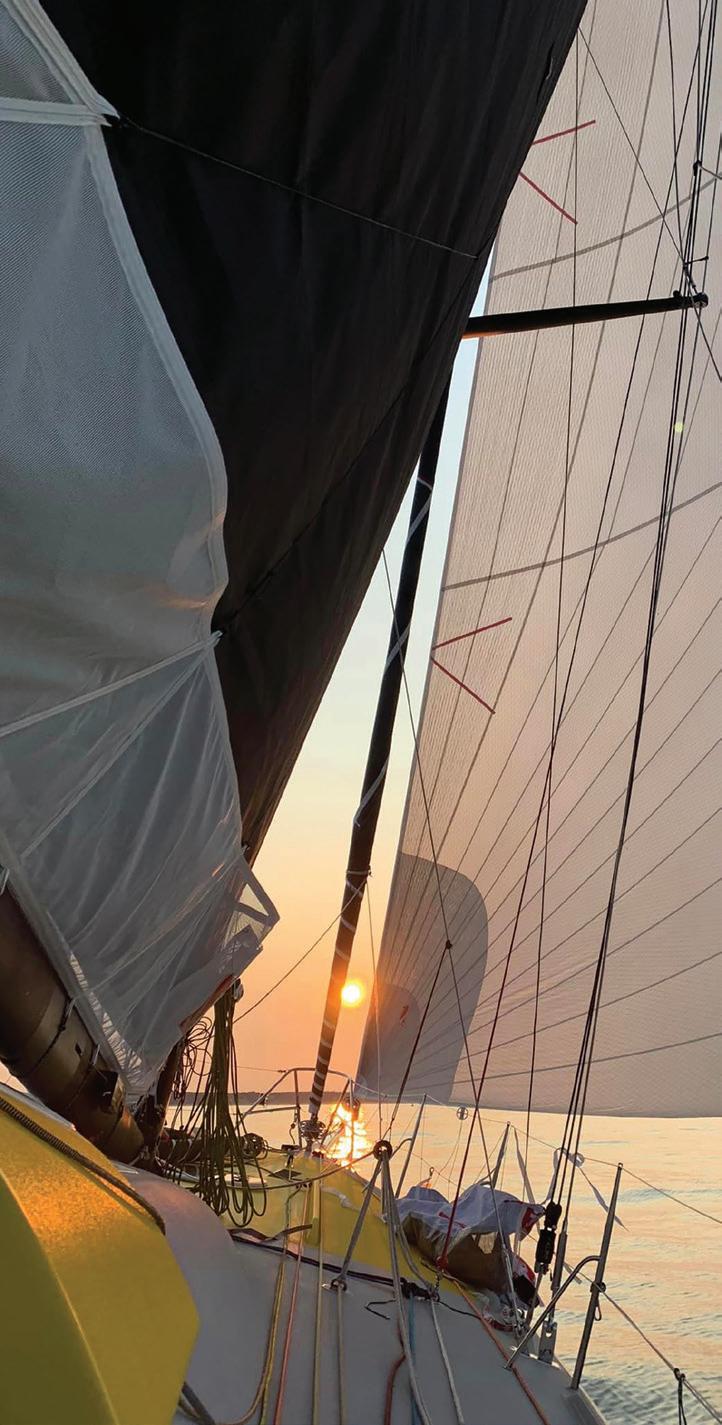
THE GOOD SHIP KOLOA MAOLI
For Dave, it was a confluence of all the right factors—time, resources, and an event aligned and led him to Koloa and eventually around the world. When he first learned of the GSC, “A little lightbulb came on, maybe I can do this…. But you kind of ignore the singlehanded nonstop around the world thing, because that’s really a big thing.” He appreciated that the GSC was advertised as an event more than a race, even though it was racing. While his lifelong dream to circumnavigate hadn’t been focused on a race format, he noted that with an event, “There’s a start date. I’m the kind of person who would procrastinate until I couldn’t physically sail the boat, I’d be too old.”
So the search for a Class 40 was on, a class of ocean racing boat he’d followed since its inception 20 years ago, and which it seemed many fellow competitors were choosing for the GSC. About three years before the start of the GSC, Dave was in Spain for the 6 Meter World Cup, and learned of a Class 40 available in northern Spain. Shortly thereafter, another came up in Maine. “Lillian advised that I ignore the boat I’d been looking at in Spain because it was too many time zones away. Maine was manageable.”
The boat in Maine would be his chosen vessel, and came with several advantages. The Owen Clark design had two near-sisterships in the race. It was at the East Coast’s top Class 40 yard, Maine Yacht Center, being cared for by someone who had circumnavigated on a Class 40 himself.
Though he had never sailed a Class 40 when he bought the boat, he found it fairly close to his expectations: “It’s a 40foot boat, draws 10 feet, and it has 750 liters of water ballast, so you know it’s going to be pretty powerful. It’s a little underperforming in light, light air. In any kind of breeze they power right up and are exciting to sail.”
Never one to let history stray very far from his mind, Dave notes: “What’s funny about the Class 40 is that, in 1969, Eric Tabarly raced a boat across the Pacific, Pen Duick V, and beat the next competitor by something like 10 days. His boat was 35 feet long, made out of aluminum,
48º NORTH 38 JUNE 2024
Testing Koloa's Code Zero in Maine.
it had a continuous chine along the waterline from bow to stern, it had a bulb keel and a trim tab, a spade rudder, and it had water ballast. So there’s nothing new. It’s all been done before.”
In that highly experienced yard, Dave received expert advice and assisted with a refit that included adding a hard dodger cockpit covering, replacing the rod rigging, and updating much of the running rigging. From the yard's circumnavigators, he learned, “If you're alone, heat might be nice,” so they added a diesel heater. Dave's delivery background had shown him that “transferring fuel from jugs to tanks is my least favorite thing to do.” So, while the 80-liter fuel tank on his boat was already almost twice the size of the stock tank on many Class 40s, he increased fixed tankage, adding “a 62-liter version on each side, one for the heater and one for the engine.” The refit included a variety of other preparations like bottom paint and sail plan work, and many projects centered around having system redundancy, from power— two hydrogenerators and solar—to communications—Yellowbrick tracker

with text capability, Garmin InReach, Iridium Go, Starlink, and a sat phone.
In the late summer of 2023, Dave boarded Koloa Maoli solo and set off for a 17-day Atlantic crossing. His longest solo voyage and qualifier for the GSC represented only about 10% of the full




loop for which he would depart a few months later.
Check back next month for the stories of Dave’s voyage around!
Joe Cline is the Managing Editor of 48° North.



48º NORTH 39 JUNE 2024
NxNW NORTHWEST RIGGING Rig locally Sail globally 360.293.1154 • www.nwrigging.com • info@nwrigging.com Ullman Sails • (360) 504-6640 9090 S March Point Road, Building C-200, Anacortes, WA 98221 Pnw.ullmansails.com ULLMAN SAILS Pacific Northwest We will be available for overnightrepairforallof Anacortes Race Week
Dave's ride around the globe—the 2006 South African built Class 40, Koloa Maoli.

RACE TO THE STRAITS
NORN'S REPORT: TWO SAILORS AND A C.O.B. RESCUE
by Kris Thompson
The first weekend in May brings Sloop Tavern Yacht Club’s immensely popular doublehanded romp from Seattle to Port Townsend and back, Race to the Straits (RTTS). This year was Norn’s second one in a row under the new ownership group of which I’m a part. Our Santa Cruz 27 Norn is well known around Puget Sound and gets smiles, thumbs ups, and shakas from many in the community. While sometimes we try and pack the boat full of great sailors, this weekend it was about dialing her in doublehanded with one of my boat partners, River Iannaccone.
Sailing conditions in May can bring sneaky surprises, with the full menu of PNW weather moods on offer—sometimes bringing beautiful days full of rays, and other times feeling like mid November. This year leaned more towards the latter, with plenty of breeze and liquid sunshine.
In typical fashion, Race to the Straits starts are chase-style with time designations based on PHRF ratings. Hypothetically, if all 102 boats on the course sailed perfectly to their rating in identical conditions, we’d get to Port Townsend at the same time. We had breeze from the north for our 8:47 a.m. start. Throughout the morning, the wind built with a nice ebb kicking

up a fair share of chop. Finding the bigger chop was like getting on the treadmill north. Norn got into the zone, and by Point No Point, we were just behind the leaders, three of whom were in our class.
It wouldn’t be a RTTS with a good anchoring session and, as the wind slowly turned off, we threw lead down just off Point No Point. Looking south, we soon learned that the entire fleet snuck up behind and a few of the larger boats ghosted by us and around the point—a déjà vu moment from RTTS 2023 around Marrowstone. The boats that snuck away quickly seemed to go course right (Whidbey) to take the shortcut up the Sound and through the gate. Once off our hook, we followed suit, realizing over time that the universe always tends to find balance—it didn’t seem that either side made out much more than the other.
Once through the gate, the breeze steadied out, only dying past Marrowstone. We used Norn’s strength of quick tacks to chase small increases in pressure. As the breeze shut off, the first day became that much more interesting, with a hefty ebb sometimes pushing 2 knots of current, only balanced by only a half-knot of breeze. We fortunately had a good 20 boats ahead that had gone the not-great circle route (a common RTTS strategy) and ended up down-current trying to get back south to the finish. We picked an angle that we thought was money, and just about 200 feet out from the finish hoisted our A1, sailing it for a slow-motion minute. We lapsed for 20 seconds and missed the finish by less than 20 feet, hearing “NO NORRRRN” from the top of the committee boat, before falling into the crowd of boats aligned just north of the finish going uphill against bad water trying to get back to the line. Gutted, we stuck it out and, within 5 minutes, we snuck around the boat end in the vicinity of many others—10 other boats finished within one minute of our time.
STYC did a fantastic job putting on an amazing gathering in Port Townsend, and we all were able to share our trials and tribulations of the day. The food and company was top notch, as always.
Sunday morning, we awoke to a steady southerly that was forecast to build as we headed south. Norn slipped up Marrowstone well and we began to engage with the Moore 24 Hummingbird by placing small bets on who could get closer to shore, crossing tacks many times. With the breeze decreasing
48º NORTH 40 JUNE 2024
Santa Cruz 27 Norn ghosting in ultralight air. Photo by Sean Trew.
Photo by Sean Trew.
but the tide shifting from ebb to flood on the south end of Marrrowstone, we opted for a quick dip close to Hood Canal where almost all the lead boats went. As we tacked over to starboard, the breeze shifted left in Mutiny Bay, and we lost much of our gains to the lefty.
Breeze and sea state increased dramatically into the gate and we were in the midst of the fleet in a washing machine of 2 to 3 foot rollers. Most of the group, including Norn, again took the small shortcut down the Sound, heading for Point No Point in dense fog/cloud cover, squeezing out in front of a 800-foot monster with Chinese goods heading to the Port of Tacoma at a good clip. (Thankfully we had our class on how the fleet avoids any issues with marine traffic in our skippers meeting!)
As the breeze built and Norn again began to steadily get into a groove up the west side of the sound, we slowly started to reel in the leaders of our class, the Olson 25 Three Ring Circus
Just outside of Apple Tree Cove and the Port of Kingston, we had watched as a boat lee bowing us shot ahead and went through a maneuver that confused both of us on Norn. Though we needed to tack and sail east to take advantage of a header, we both decided something didn’t seem right and it was more essential to take a look at the situation in front of us. We noticed an object in the water and, as we came closer, we quickly realized that it was a PFD and, thus, likely a human. We both went into a quick recovery mode, dropping our headsail, readying our throwline, and getting the outboard down (but not in gear). It took two passes to square up the throwline, but we got our fellow competitor on board Norn within 5 minutes. The crew still on board the other boat had dropped their jib, and we had them follow us into Kingston, dropping off our temporary
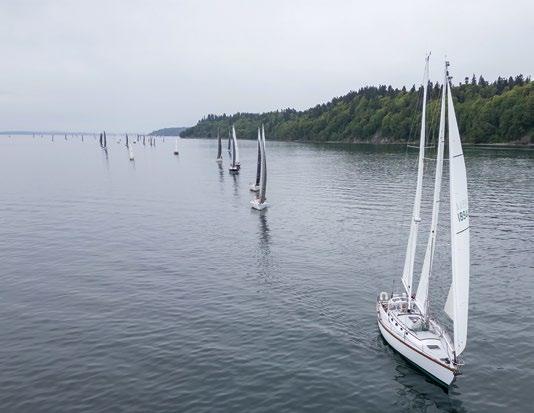
third crewmember to get warm on shore.
For obvious reasons, we suspended our race from there. We motored home safely, happy to have been a part of the solution in a difficult situation. We’re hoping for redress, but the main thing is that we had a great weekend of doublehanded sailing on a boat we love with a bunch of great people.
Overall honors for the weekend go to Jonathan McKee’s Riptide 44, Dark Star, followed by Stephanie Arnold sailing J/112e Mystery and Michael Karas on the Gougeon 32 catamaran, Incognito. Thanks to Sloop Tavern Yacht Club for another great Race to the Straits—this will be one for the memories and future stories at The Sloop.
Full results at: https://www.styc.org/Race-to-the-Straits
THE NORN CREW’S LESSONS FROM THE COB RECOVERY
It’s nice to review a Crew Overboard (COB) situation when everything turned out fine, as it did in this case. I’m not a safety expert, but having just enacted a crew overboard rescue, here are a few of my observations from that experience:
1. The requirement to wear PFDs went a long way that day— for the person in the water to stay afloat obviously, but also for our ability to see that person. Both of us on Norn feel extra incentive to wear them, especially if the breeze picks up, whether we have two or six sailors on board.
2. Getting a person out of the water is a process that takes effort and strength. The modified open transom on Norn was particularly helpful in bringing the COB onto our boat. If your vessel doesn’t have an easy way to get someone or something out of the water, I suggest buying a quick ladder to aid with a conscious able-bodied COB, in addition to the LifeSling which could be hoisted from a halyard.
3. Recovering a real person out of the water is so different from what we do in a drill. I highly suggest that we work to develop better, safe ways to practice this—in everything from a J/70 to a 70-footer. I believe there are some sessions available with a weighted dummy. In my experience, we practice getting to a COB much more than we do (or
can) practice recovering something much heavier than a fender or a lifejacket, and I feel that more people would benefit from practicing the second and potentially more strenuous part of the recovery.
4. We need a better first aid kit on board Norn. The COB had minor cuts and we didn’t have what we should have. A solid investment on any boat!
5. I want to especially commend both sailors aboard the vessel we assisted that day. They did an incredible job of keeping cool in a frightening situation. It’s difficult to imagine what any of us would do if we lost half our crew over in a 20 to 25 knot blow. In this case, both the crew on the boat and the crew in the water were excellent at maintaining composure. It really helped us all find a quick path to a relieving outcome in this situation.
*Editor’s Note: 48° North is in communication with the person who was overboard, and this person will be sharing their personal story via 48° North in the coming weeks.
48º NORTH 41 JUNE 2024
Sir Isaac leads the fleet up the shorline looking for eddies. Photo by Sean Trew.
ROUGH AND REWARDING
PACIFIC NW OFFSHORE 2024
 by Nicholas Leede and the Tachyon Crew
by Nicholas Leede and the Tachyon Crew
The Pacific Northwest Offshore Race brings sailors 193 ocean miles up the Washington coast and down the Strait of Juan de Fuca from Ilwaco, Washington to Victoria, British Columbia. This years “Offshore”, as its most dedicated fans call it, was the first offshore event for our boat, the Farr 39CR Tachyon , and the majority of our crew.
Leading up to the race, which started at the Columbia River on May 16, the workload was massive. Getting everything together, from prepping the boat to taking safety at sea seminars to finding that perfect weather window for the shorthanded delivery down the coast and across the Columbia River Bar was a challenge. The volunteers with CYC Portland were very accommodating with answering many phone calls, questions, and helping to get us down for the race. Turns out, getting there was the easy part with a 36-hour delivery from the Ballard Locks and a stunning northern lights show that will not be forgotten.
The docks lined with boats in Ilwaco were like they are in any other race— lots of pleasant banter, last-minute boat prep, seeing old friends, and making new ones. Bruce Hedrick joined us via Zoom at the skippers meeting to give us the skinny about the weather. The wind was forecast to start off light and build into the mid to upper twenties as we went north. But, not to anything crazy. All the last minute classifications were given on the virtual start/finish line and we were off the following morning.
Our crew eagerly got Tachyon off the dock and headed out across a very calm Columbia River Bar. Sails were up and GPS countdown set. We started in the first row with Club Swan 42 Free Bowl of Soup and the F-45RC catamaran Cheeky Monkey to leeward of us. All of us a few boat lengths back from the start line to avoid the potential two-hour time penalty for being OCS.
Free Bowl of Soup, and the J/120s Time Bandit and Pathfinder were all neck-and-neck for the first third of the race, exchanging positions. Once the wind started to get into the upper teens, Free Bowl of Soup’s waterline and displacement really started to show as they legged out. All around
48º NORTH 42 JUNE 2024
us, boats were busy with plenty of sail changes, from light air jibs at the start, asymmetrical kites as the breeze clocked west, and quick changes to J3 and J4s in the building wind.
About 4 hours into the race, half the crew on Tachyon was seasick. The wind picked up quickly and made for a very confused and choppy sea state—like a Salish Sea washing machine but with ocean swell. We reduced sail to a reefed main and J3, but you couldn’t drive the waves to save your life. We kept everything eased and tried to stay powered up going through the waves. The pounding was intense, to say the least. Being short-staffed due to seasickness made more work for fewer people being able to drive the boat. Around 11 p.m., we lost our wand on top of the rig and had to sail by brail the rest of the night.
During our upwind slog, we took on around 40 gallons of seawater. Even with hatches dogged down and companionway shut, water found its way in, and we narrowly avoided an electrical fire from cell phones on the nav station sitting in water while plugged into the 12V outlets. To make matters worse, and with morale already down, the diesel heater stopped working around midnight and made for an even colder, sick crew. We love boat racing, but this was rough.
As daylight broke, we were within sight of Duntz Rock and had heard reports of boats retiring due to seasickness and broken gear. Seeing the rock was one thing, but rounding it and popping the S2 in the low 20s was sweet. All of a sudden, everyone seemed to have magically gotten better.
Time Bandit hugged the American shore side as we made our crossing over to Canada. We were 6 miles behind Soup. The Bandits made their crossing, and we all saw that it had paid to stay on the American side. The wind picked up as we got to Sheringham Point and then through Race Rocks. We doused Tachyon’s kite through Race Passage and opted for a two sail broad reach with the wind pushing into the upper 20s. Tip of the hat to Time Bandit for holding their kite and legging out to the finish.
The welcoming party greeted us with big smiles, hot towels (magical!), and champagne. We greatly appreciated the
As the breeze built, the sea state got more confused and some crew got seasick.
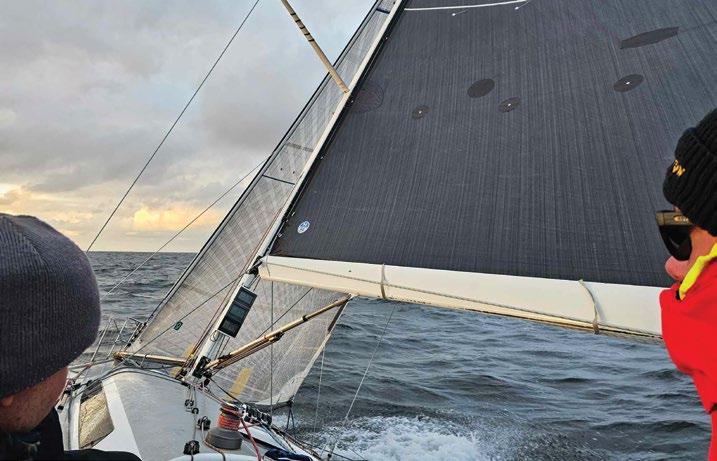
effort by all the volunteers—it really added a nice touch to the event.
Pacific NW Offshore is truly a special race. I learned loads about the boat, including things I need to modify, and we made some new friends. The chatter on the dock in Victoria was all about the sea
state, suggesting this was the worst many boats had seen over the years. Everyone is putting in an order for some downwind sailing up the coast next year!
Big thanks to CYC Portland, Schooner Creek Boat Works, and all the sponsors for putting on a great event.
Full results at: https://www.cycportland.org/pnwo-home

Success! It definitely wasn't easy, but the Tachyon crew completed their first offshore race, finishing second in their class and fourth overall.
48º NORTH 43 JUNE 2024
TWO VERY DIFFERENT TRI-ISLAND RACES
 by David Miller
by David Miller
THE SKIPPER OF THE J/99 ONE LIFE SHARES THE STORY OF A PAIR OF DICHOTOMOUS SPRINGTIME DISTANCE RACES. THEY WON THEIR CLASS IN EACH EVENT.
SMITH ISLAND
This season has been memorable for strong winds, including 50 knots true just off Meadow Point collapsing masts and shredding sails. Seattle Yacht Club’s Smith Island Race, the first of their Tri-Island Series, created more breeze-on memories for its participants.
The Tri-Island Series is a sequence of three distance races of decreasing length, running in April, May, and June. The Smith Island Race, which alternates years with the Protection Island Race, takes place in April and is the longest of the series at 85 miles for the long course, and is also a qualifier for races like Swiftsure and Van Isle 360. It’s always a long and compelling journey.
A strong southerly had the fleet scudding north to Smith Island under platinum skies and spinnakers in winds ranging from the teens to the 20s, halfway across the Strait of Juan de Fuca’s easternmost edge. Blown kites were an early feature, but wind with the tide kept seas flat and boats fast. For our J/99 One Life, it was a wonderful sleigh ride north to just past Marrowstone, when sea state and wind shifts had the crew on watch douse the spinnaker and go to reaching under reefed main and a freshly repaired J3. Thanks to a lack of sleep the night before, I napped for much of our northbound blast.
And that, my friends, is where the fun ended.
Anyone who sails Puget Sound for any length of time knows strong winds against strong tides creates a dismal sea state. Slab-sided waves, otherwise unremarkable for their 3 to 5 foot height, stack together with short 10 to 15 foot periods between
wave tops to make a truly miserable ride. Add cold weather and rain, and you have a recipe for rather comprehensive misery.
On our boat, nearly half our crew were busily using the emesis bags stocked aboard—many of whom had never had seasick issues previously. Proving good crew always pick each other up, those who weren’t sick and weren’t driving or trimming main, swapped out empty bags for full, pushed electrolyte loaded water bottles, and generally raided the on-board pharmacy for anti-seasick meds to help pull their crewmates from the depths of despair. After being seasick during the critical night hours in the 2022 Swiftsure Race, I’d slapped on a scopolamine patch before we left the dock and wasn’t seasick. My northbound naps earlier in the race also proved fortunate as I could share more of the load with the sick folks—some of the same people who picked me up during my nauseating Swiftsure experience. Doesn’t racing sound fun?
Winds kept building into the high 20s, as did the waves. The carnage down below on One Life was impressive. The head door came off, shortly followed by the toilet seat and cover. Handholds had cracks as our crew tried to keep from being tossed about. It was easier to shuffle on hands and knees with the boat pitching like some deranged mechanical bull while heeled over 25+ degrees all the time. I drove during the worst of it, but once the winds slowed down and the tide shifted I was able to go below and it still felt like being inside one of those old Fisher Price popcorn roller toys. (Editor’s note: Highly experienced sailor and sailmaker Kerry Sherwin, deemed the
48º NORTH 44 JUNE 2024
southward transit near Marrowstone simply, “The worst I’ve ever seen it.”)
Tacks became less about strategy and more about trying to find slightly flatter water to keep the crew safe and the boat from slamming into a wave and completely stopping. Fortunately, we managed that until the tide shifted and the seas went from full suck to slightly less suck.
“Type 2 Fun” is defined as a decidedly un-fun time during an experience which, after time, becomes fun in retrospect. I’ve had many, many Type 2 sailing experiences. Though it’s only been a few weeks, I’m pretty sure this one is firmly Type 3: Obliterating during and, after time, still dreadful.
For One Life, we spent 14 hours on the water with a total distance sailed of a little over 100 miles; so for Smith Island Races on a boat like ours, that’s reasonably fast. That’s not the real story, though. The real story was a 5-hour trip north and a 9-hour bash home. Our effort was good for a first in class, however, and what I’d estimate might be third overall (if I do some slight-of-hand with our ORC rating to compare our times with the ORC fleet—oddly, despite having gone through the ORC measuring process for the 2023 Van Isle 360 race, yours truly entered One Life in the PHRF class).
In the ORC Long Course, John Murkowski’s J/122 Joy Ride got the bullet in ORC Class 3 and overall on adjusted time. The Leede family’s Farr 39 Tachyon won ORC Class 2 by 49 seconds adjusted over Jonathan Cruse’s Freja. John Buchan’s TP52 Glory took the ORC 1 win. Line honors went to Alan Lubner’s Reichel/ Pugh 55 Zvi

For the short courses, Moose Unknown led the J/105 fleet home. The Quest 30 Charlotte took first in Class 6. J/80 Jolly Green led a mixed fleet in Class 7 and the Norlin 34 Runaway topped the charts in the Cruiser/Racer course. Kudos, by the way, to the SYC Race Committee who were probably also questioning their life choices most of the day.
Ultimately, Smith Island 2024 was a memorable one that I’d kind of like to forget.
VASHON ISLAND
For those who bashed their way south on consecutive cold, gloomy, blustery weekends for the SYC Smith Island Race and the STYC Race to the Straits, the warm sunshine and light breezes forecast for Seattle Yacht Club’s Vashon Island Race— the second installment of the Tri-Island Series—were probably a relief. Even without any wind, the chance to bob around in nice weather without feeling like a cold and soggy pachinko ball was most welcome.
The Vashon Race entails a 47-mile clockwise circumnavigation of Vashon Island for the long course and a trip to the Point Robinson lighthouse and back for the shorter course. Predictions had suggested a steady 5 to 8 knots, which would disappear with the Aurora Borealis light show overnight. Racers woke up to a race-day forecast update and reality of less steady and even lighter winds. The SYC Race Committee put up the AP flag at the scheduled start since very little wind and strong tides would have made crossing the start line borderline impossible for everyone but the fastest ORC class boats. Speaking of ORC,
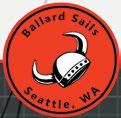



48º NORTH 45 JUNE 2024
due to my registration goof, we were again racing under PHRF with our recently minted ORC certificate sitting on the shelf.
After a roughly 90-minute delay, the SYC committee got the race off with hallmark efficiency. With the start line positioned well towards West Point and a downwind spinnaker-hoist start into the a face of a strong ebb, the majority of boats jibed to port to take advantage of the Ship Canal outflow. From there, nearly the entire fleet chose to hug the Magnolia shore.
On One Life, our strategy was to bang the beach at Alki and work up the east side of the race course. Complicating that plan, a big dead area appeared about two-thirds of the way across Elliott Bay, and most of the fleet decided to try their luck on the Vashon side. This was, as it turned out, the better move for all but a handful of boats.
The entire day—and night for the few boats who didn’t retire after the halfway mark—was a race of minutes. Fifteen minutes here or 20 minutes there were the difference between being able to link together wind patches. Sadly, we were 15 minutes short of linking into the east side shore breeze that Hooligan, Spyhop, and a couple others rode to great effect. Arriving minutes late, we got into the first of many, many wind holes just off Alki while we watched boats on both edges sail off into the distance.
With a 19-hour time limit of around 5:40 a.m., and the potential promise of more Aurora action, we and a few other boats stuck with it. One Life and Zachary Tuck’s Farr 395 Zulu Tango (in class ORC 2) plus a couple other boats stubbornly continued to work the east side. The J/105 Dulcinea was with us for a while, before switching to their jib and working back north to the wind line to be redirected down the west side. By the time we and Zulu Tango finally made it past the Fauntleroy dock, there was pretty much nobody left on the east side.
In another game of minutes, Zulu caught a wind line just after the dock and pulled well away from us. As we closed in on Point Robinson—our halfway point and the short course turnaround—we started seeing class competitors who passed the halfway point motoring back. As we got closer, we learned why: pretty much the entire fleet was stalled between the south end of Vashon and the Pierce County shore to the south. Keeping with the theme, however, as we closed the gap our wind shut off and theirs turned back on.
A nice breeze finally came up out of Commencement Bay and the fleet approached the south entrance to beautiful Colvos Passage. Spinnakers went up and down a few times, and we were lucky enough to avoid the only wind hole we missed all day—a huge one just off Gig Harbor where several fast ORC fleet boats were drifting or even anchored. Those who hung in long enough, however, were rewarded with 10 to 15 knots of warm northerly and a beautiful sunset sail the entire length of Colvos Passage.
On One Life, we’d seen or heard radio calls from our class compatriots that they were retiring. We knew if we could navigate the final third of the race, we’d take our second bullet in the Tri-Island Series. We saw our friends on Zulu Tango stuck in a terrible wind hole and adverse tide just off the northwest point of Vashon, so we banged the west exit of Colvos. Here we need to thank the crew of the ferry Cathlamet, who very calmly
The One Life crew, all smiles and focus whether it's a nauseating bash-fest or a slow-motion game of connect-the-puffs.

and professionally navigated to and from the ferry dock there with our boat right out front. A few clearing tacks from us to help them out, and we were able to avoid motoring to get out of their way.
Night sailing is tough in shifty wind because you can’t see wind on the water very well. Instead, red lights on the Windex, feeling breeze on your cheeks, and assessing whether it is warm wind (bad) or cold wind (good), are your only tools. After some tense times and several west-to-east-to-west wind shifts, we finally cleared the lee of Blake Island only to find that Zulu Tango had Houdini-ed their own escape and ended up out in the clear, strong air in front of us. From there, it was easy sailing across to Magnolia, where the wind was very clearly shutting off. Both boats tacked well out into the middle of the thankfully-unused traffic lanes (the committee had to be wondering where the heck both boats were going). Sacrificing any sort of desirable VMG to stay in the wind, both One Life and Zulu Tango sailed miles out of our way to stay in the breeze. After a 50-degree knock or two while reaching back to the line, both of us crossed shortly after midnight. One Life was the last boat on the race course, proving the old adage that the tortoise does indeed win some races since we took the bullet, awarded for more for persistence than speed.
The TP52 The Shadow II topped ORC Long Course Class 1, also taking line honors with a remarkable 9:05:17. The Custom 40 Madrona took ORC 2. The J/109 Spyhop took ORC 3, trailed by two J/111s as the only three boats in the class to finish.
Short course winners were Dulcinea in the J/105 class, proving the fastest way to go forward sometimes is to go backwards first. The Quest 30 Charlotte took Class 6 and J/80 Jolly Green took the mixed Class 7.
On the Cruiser/Racer course, the Beneteau First 345 Light Foot topped Class 8 and the Baba 40 Airloom won Class 9. While it was a long, slow, sometimes disheartening slog, this year’s Vashon Island Race still offered many of the delights of sailboat racing in the PNW. And especially compared to our experience on the first Tri-Island race, the second one was declaratively pleasant and more fun. The series wraps up with the Blake Island Race on June 1, 2024.
Full results at: www.seattleyachtclub.org/web/pages/regattas
48º NORTH 46 JUNE 2024
Photo by Lizzy Grim.
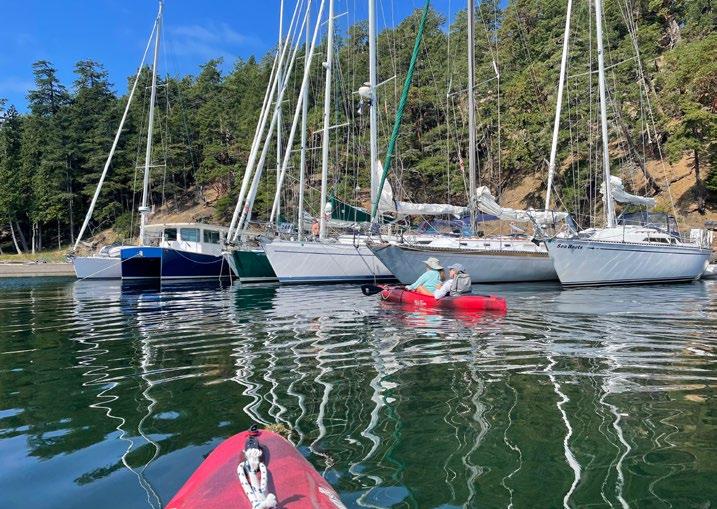
$385,000
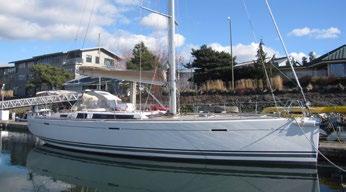
2011 DUFOUR 525 GRAND LARGE
Fantastic Performance Cruiser! Tri-radial Performance Sails, classic mast, retractable bow sprit & more! 3C/2H layout with Master Cabin forward and en-suite head, nice size guest cabins aft and 2nd head/ day head. Massive interior with lots of light, large L-galley and center island aft to port. Large settee to starboard with centerline bench seat. Long Settee to port. Big Nav station with nice swivel chair. Extremely well equipped and ready to cruise. Lots of recent upgrades including NEW Dodger & Bimini, NEW Raymarine Chartplotter. » Contact Dan Krier • info@marinesc.com • 206-323-2405 • $385,000

$17,000
1976 CHRIS-CRAFT 25 EXPRESS HARDTOP WITH TRI-AXLE TRAILER
In Port Townsend, WA, KB has been fully restored above and beyond her original condition with modern electronics and systems and includes a recent rebuild of the original Mercruiser engine (330 hours). She is a classic, well-suited to the protected waters of the PacNW for crabbing, fishing, overnight gunkholing or day cruising. » Contact Pamela J Nolan • (206) 5795384 • pnolan483@gmail.com • $17,000

1970 SOUTHERN OCEAN GALLANT 53
BY VAN DE STADT
Designed by E.G. Van de Stadt, these Gallants gained a reputation for their good looks, bulletproof construction, and how easily they handle with a minimum crew. This Gallant has had only 2 owners. She is actively being cruised, and is currently In French Polynesia. Rigged for single-handed sailing. Inboard fuel filtration system. For full spec sheet and photos https://drive.google.com/drive/ folders/14sa0a5_bPg11wx0YKH5oqcrFcsSRN1qB » Contact Sv.auntie@gmail.com • $145,000
$72,900

CUSTOM 43’ EDSON SCHOCK KETCH (1973)
Professionally built of mahogany planking over oak frames, Debonair has been lovingly maintained. Extensive upgrades include new electrical and 75hp Yanmar. Consistently turning heads, Debonair is a seaworthy passage-maker, recently completing a 16,000nm tour of the South and North Pacific. From rig to sails, systems to safety, Debonair is voyage-ready. Details: porttownsendboatco.com or www.yachtworld.com/yacht/1973-custom-edsonschock-43'-ketch-8441971/ » Contact Vance Rucker • ketchdebonair@gmail.com • $72,900
KIRBY 25
Great Bruce Kirby 25 all fixed up for racing & daysailing. Very fun to sail as it’s very responsive. All lines to cockpit, can be soloed. Ballard Sails mainsail and 2 jibs in great shape. 2 regular spinnakers and 1 storm spin. 8hp Yamaha w/brand new carb. Recent: Bottom paint Feb ’24, Running backstays (for racing, not reqd for sailing), Selden boom, SS lifelines, Pelagic auto. At Shilshole. » Contact Vince Vonada • (206) 718-0047 • Vinnyv2@comcast.net • $8,500
$15,000
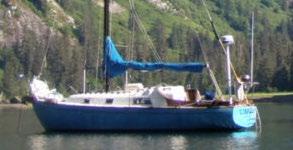
1977 MERCATOR OFFSHORE 30
A Sound vessel for single or two comfortably. A great learning vessel. Original economic 18hp Sabb diesel engine with feathering prop. Has taken her skipper north to Juneau over the last decade inside and out at times. Must see to appreciate. Diesel forced air heater. Propane stove. Jabasco Head. Foot pumped water. 6 Berths. Owner has health issues and is motivated. » Contact Frederick Pabst • (253) 226-0212 • blueribbonfarm@tx3.net • $15,000
$31,000

SWEDISH ALBIN BALLAD 30 1973 OCEAN CRUISER RATING
Complete refit 2008-2022. New: BETA 20 engine, maxprop, rudder, sails, rigging, RaymarineST60, Northstar952XGPS, Raymarine ST8001 autopilot, ST Anderson winches, hard dodger, deck hardware, Rolex roller, bronze thru-hull, head, propane cook stove, wood stove, VHF. Single/ double handed world cruiser. Fast/Dry/Stiff. » Contact Louis Tercier • (360) 375-5438 • Louistercier@gmail.com •$31,000
$4,499

VENTURE OF NEWPORT 23
Very nice trailerable sailboat. I get constant compliments from people who didn’t know MacGregor made such a handsome, jaunty, and sassy looking model. All exterior wood is teak. About the lightest towing weight of any boat this capacious. Good condition. Sunbrella covered cushions. Everything works. Great galvanized roller trailer. Boat can be sold separately. See specs and many photos online. » Contact Richard Dodge • (206) 954-7208 (Send text) • dodgerichard027@gmail.com • $4,499
48º NORTH 47 JUNE 2024 CLASSIFIEDS BOATS FOR SALE BOATS FOR SALE
BOATS FOR SALE
$145,000
BOATS FOR SALE BOATS FOR SALE BOATS
$25,000

33 FOOT C&C
Well equipped C&C 33 foot MK11 with trailer. Minor repairs needed. Worth $35,000, asking $25,000. Will consider reasonable offers. » Contact Jan Martin • (406) 459-3339 • jomvallymt@gmail.com • $25,000
$45,500

1983 BABA 30
Designed by Robert Perry and built by TaShing. Cabin and topside painted with Awlgrip in 2015, new mast and standing rigging 2017. Repowered in 2001 with a Yanmar 3GM30 diesel. Dawn Treader has been well loved and well maintained, located on a private dock in Hansville, Washington. » Contact Bruce Cosacchi • (206) 819-7079 • pbc200606@yahoo.com • $45,500
$199,500

CUSTOM 2008 GAFF KETCH MOTORSAILER
Head turning. Seakindly. Spacious. AK vet. Maintained. 6.75 kts. Efficient .67 gph. 160 gal fuel. New 12" Garmin electronics. Autopilot. In/Out helms. Sleeps 6. Pilothouse. Salon. Fireplace. AirHead. Solar. Spares. Bronze fastened. NWSWB built. OR white oak. Purple heart. Mahogany hull & in. 24" MaxProp. Easy maintenance w/covers. AchillesRIB. Oly slip.
» Contact Capt. Peter Wilcox • (503) 490-5407
• peter@decarbthepassage.net • $199,500 OBO
$24,000

25' JIM BROWN SEARUNNER TRIMARAN 2017
Ready for the next voyage. Fully restored in 2017 Searunner 25 Cutter. Has been freshwater kept its entire life. Epoxy over plywood. For tons of photos and details about this boat visit searunner25.com. This boat is designed to fold for transport on a seasonal basis – folding/unfolding takes a few hours. Email me to set up a video tour. » Contact Dan • nibiru@searunner25.com • $24,000

1994 CATALINA 270
Perkins 18 HP Diesel, Pedestal Steering, 100 & 130 jibs, tri sail and main, dodger, wheel and sail cover, and winged Keel. » Contact Mark • 206-784-4474 • mjquam2@q.com • $20,000 $20,000
$52,000

36’ ROUGHWATER CRUISER 1981
Cruise 8k, plane to 15k. Fiberglass hull. 6cyl turbo diesel, 3500 hrs. New Raymarine chart plotter. Radar, AIS, 3000w inverter. Maxwell electric windless, 200’ chain. Solar panels. Tecma electric toilet, 35 gal holding tank, 200 gal diesel, Propane stove and Cozy Cabin heater. Reefer/ freezer. Recent Survey. Located in Pleasant Harbor WA. » Contact Brad • (360) 774-0912
• carreirasuzanne@yahoo.com • $52,000
$129,900
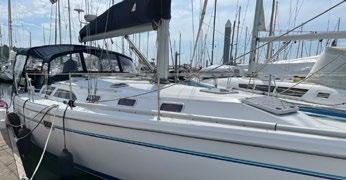
1997 CATALINA 42 MK. II
2-Cabin pullman layout. Perfect Northwest cruiser with full cockpit enclosure and propane furnace. Recent updates include full canvas, Doyle StackPack, new Rocna anchor/chain/rode, replaced windlass, new 3-burner Force 10 stove, new prop shaft and seal. Raymarine auto pilot, chart plotter, radar. 1091 Hours on well-maintained Yanmar diesel. 10 Ft Mercury inflatable and 9.8 HP outboard. » Contact (206) 316-7165 • c_loader@msn.com • $129,900
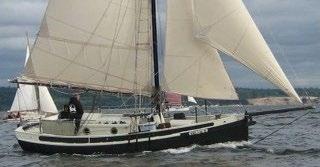
1994 26’ LYLE HESS GAFF RIG CUTTER
$59,500

1976/2006 REFIT CASCADE 42 HIGH SIDE
Long distance cruiser. Watermaker, windvane, 2000-watt inverter,2020 repower, Lewmar 2000# windlas, SSB, (2) VHF, Autopilot, 8.5' RIB, MAX Prop, PSS shaft seal, Pro Furl, 150 gal. fuel, 160 gal. water. Email for equip. list and description. » Contact Ace Anderson • (503) 458-6195 • aceandy@ centurylink.net • $59,500 OBO
$70,000

CABO RICO 38
Excellent boat for a couple to cruise. We have cruised her over 10,000 miles, and her previous owner sailed her to the South Pacific (Australia) and back. She has been well maintained over all that time. Easy to sail, comfortable, and safe boat to cruise. World class designed and built to the highest standards. » Contact George P Leonnig • 1(503) 707-6062
• moctobi@gmail.com • $70,000
$16,000

1966 CENTURY RESORTER 17
Mahogany inboard. New varnish & bottom paint. Newish 383 (500hp). 50 mph. New upholstery. New cockpit sole. New fuel tank. New gauges. Rebuilt transom. New king Trailer. Ski tow-post. Nearly new custom cover. 5200 bottom w/glass-epoxy over. Custom teak swim step. Serious inquiries only. Bainbridge Island. » Contact Jim Llewellyn • (206) 842-4552
• jim.llewellyn47@gmail.com • $16,000
Traditional construction, plank on frame, Red CedarMahogany, galvanized fasteners solidly built. Built at NWSWBB and launched in Port Townsend. Reefing bowsprit, Yanmar 2GMF diesel, VHF Radio, Propane 2 burner cook stove, wood stove for heating (SARDINE). In sail ready condition to enjoy sailing traditionally in NW and Canadian waters! » Contact Andy • (360) 202-8031 • niyahsea@hotmail.com • $24,000 $24,000
$115,000
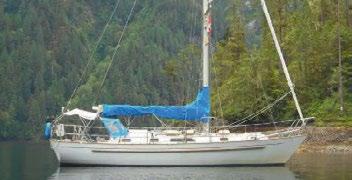
PASSPORT 40 1983
World Capable Cruiser. Ready to take you cruising. Beautiful yacht. Cutter rigged with oversized rigging and extra cockpit winches. Lots of newer equipment; 40 hp Yanmar engine, autopilot, radar, stove/oven, watermaker. Cruise equipped; large sail inventory, windvane, heater, fridge/freezer. 2018, engine and power train refurbished at $20K cost. Orcas Island, WA. » Contact Tom Owens • (360) 632-8896 • svlandsend@yahoo.com • $115,000
48º NORTH 48 JUNE 2024
SALE
FOR
MOORAGE MOORAGE
44 FOOT
Great location for access to San Juans and Gulf Islands at Semiahmoo Marina a best class marina. Slip C-18 is close to main dock and bathhouse with bow in starboard tie and allows 46' maximum overall with 14.3' beam. More info at: https://semiahmoomarina.com/moorage-2/
» Contact John Cavanaugh • (360) 672-2760
• johncavanaugh@boatsafloat2.com • $105,000
$335,000
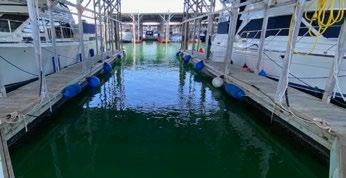
COVERED BOAT SLIP FOR SALE IN ANACORTES FOR 50FT BOAT
Covered boat slip in the private Anchor Cove Marina in Anacortes. The slip is 45ft in length but allows a 5 ft overhang so total boat LOA can be up to 50 ft. Slip is 16 ft wide with 17 ft of overhead clearance. The Marina features secured parking, showers, ice machine, BBQ, crab cookers, laundry and a work shop. The marina is an easy walk of a few blocks to town.
» Contact Rick Hyman • 1(650) 906-8287
• rhyman@pacbell.net • $335,000
$245,000

COVERED BOAT SLIP FOR SALE IN ANACORTES FOR 45FT BOAT
Covered boat slip in the private Anchor Cove Marina in Anacortes. The slip is 40ft in length but allows a 5 ft overhang so total boat LOA can be up to 45 ft. Slip is 16 ft wide with 17 ft of overhead clearance. The Marina features secured parking, showers, ice machine, BBQ, crab cookers, laundry and a work shop. The marina is an easy walk of a few blocks to town.
» Contact Rick Hyman • 1(650) 906-8287
• rhyman@pacbell.net • $245,000
$180,000

40' MOORAGE LAKE WA FOR SALE, LIVEABOARD OK!
This is a 40' x 16' legal Liveaboard moorage for an owner or great investment for rental to nonliveaboard boat owners. The slip is positioned for easy in and out access. HOA quarterly dues are $495 and includes 30-amp electrical, water, secure parking and electric gate for entry, security cameras, pump-out, trash pick-up, coin laundry, hot showers, WI-FI, mailbox and 3'x6' heated storage locker.
» Contact Steve Faloon • (425) 442-9619
• Noolaf@aol.com • $180,000
LIBERTY BAY MARINA
40’ – 48’ – 60’ slips. Great location in Poulsbo, WA Restrooms, Showers. Call the Marina Manager for availability and waitlist options: 360-779-7762

ALASKA DELIVERY SKIPPER
Experienced Alaska skipper available for yacht delivery between Puget Sound and SE Alaska or return. Expenses only if timing is right. » Contact Victor Stevens • (503) 901-7814 • captvic4@gmail.com
VESSEL MOVING
No ocean too big, no trip too small, no ship too large, no mast too tall, sail or power, we move them all!!! When you are ready,


WANTED
LOOKING FOR SALISH SEA CHARTER IN MID-SEPTEMBER
Highly experienced sailing couple seeking to charter a sailing vessel in the Salish Sea from a private owner, for about 10 days in mid-September. Will provide resume and current USCG license. Price and terms negotiable. » Contact Art Shaw • (458) 246-9190
• arthurearlshaw@gmail.com •$2,500


Sailing Association courses Basic Keelboat 101 through Advanced Coastal 206 Based in Beautiful Anacortes, WA www.sailtime.com/anacortes/sailing-school info@seattleyachts.com 360-299-0777
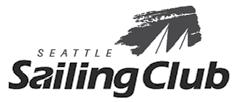

48º NORTH 49 JUNE 2024
INSTRUCTION Basic through Advanced Sailing Lessons Week-long Cruise & Learn lessons Spinnaker, Intro and Advance Racing Classes Gill foulweather gear & Dubarry footwear 206-782-5100 www.seattlesailing.com info@seattlesailing.com 7001 Seaview Ave NW Suite 130 (Shilshole Bay Marina in Port of Seattle Building)
American
give us a call. Professional service since 1967. CappyTom@aol.com • (206) 390- 1596 PROFESSIONAL SERVICES Full service rig shop serving Puget Sound www.evergreenrigging.com Cliff Hennen (360) 207-5016 • (206) 718-5582 The Systems Specialists www.emharbor.com Please contact us to arrange a visit: 206-285-3632 E-mail: info@emharbor.com Electronics E-mail: larry@emharbor.com Based at Elliott Bay Marina
SLIP FOR SALE SEMIAHMOO MARINA
For even more photos and listings check out 48north.com/classifieds
MARINE EQUIPMENT MARINE EQUIPMENT





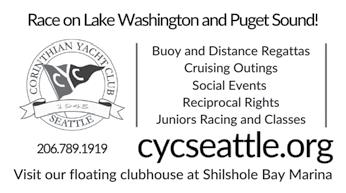


48º NORTH 50 JUNE 2024 CLUBS CROSSWORD SOLUTION PLEASE SUPPORT THE ADVERTISERS WHO BRING YOU 48° NORTH Aspen Power Catamarans 11 Ballard Sails & Yacht Repair ................... 45 Be Whale Wise ........................................... 35 Beta Marine West 10 Boat US 12 Cape George Marine Works .................... 35 Corinthian Yacht Club Tacoma 35 CSR Marine 45 Downwind Marine..................................... 17 Drivelines NW ............................................ 19 Elliott Bay Yacht Sales 51 Fisheries Supply 4 Friends of the San Juans ......................... 33 Gig Harbor Boat Works 19 Iverson's Design 39 Marine Service Center ............................. 56 Northwest Maritime Center 19, 51 Northwest Rigging 39 PetroCard .................................................... 17 Port of Friday Harbor................................ 17 Port of Port Townsend 8 Port Townsend Shipwrights Co-Op 25 Race Week Anacortes ..................................9 Sail Northwest 2 Sailrite 7 San Juan Sailing ........................................ 33 Seattle Sailing Club 3 Seattle Yachts 54 Seattle Yachts Sailing Academy ............ 15 Seventh Wave Marine .............................. 25 Signature Yachts 55 Swiftsure Yachts 53 The Artful Sailor ........................................ 35 Ullman Sails 39 Washington Sea Grant 29 Waterline Boats ......................................... 51 Yachtfinders/ Windseekers 52
Basic through Advanced Sailing Lessons Week-long Cruise & Learn lessons Spinnaker, Intro and Advance Racing Classes Gill foulweather gear & Dubarry footwear 206-782-5100 www.seattlesailing.com info@seattlesailing.com 7001 Seaview Ave NW Suite 130 (Shilshole Bay Marina in Port of Seattle Building) Fractional Membership makes boating affordable & easy! Your boat is ready when you are! https://sailtime.com/location/anacortes info@seattleyachts.com 360-245-1320 SPINNAKER PIC CAN O R D O A UNDERWAY PUMP P I M K S R E PEAK LEECH RV E P N A S E REPAIR ANCHOR S I EAT D U D STERN SALTIE S C S L D TAHOE CHINOOK AGE A O Z W E R SCREW ERNES 12 345678 9 10 11 12 13 14 15 16 17 18 19 20 21 22 23 24 25 26 27 28 29 30 31 32 33 34 509.928.1964 Asymetrical drifters & spinnakers Classic Sails (Gaff, Sprit & Lugs) Performance furling & G-SpinnTM Sails Light Air Sails we design & make custom sails in washington state! YAGERSAILS.COM FLYINGSAILS.NET NW Sail and Canvas Makers YAGER SAILS & CANVAS
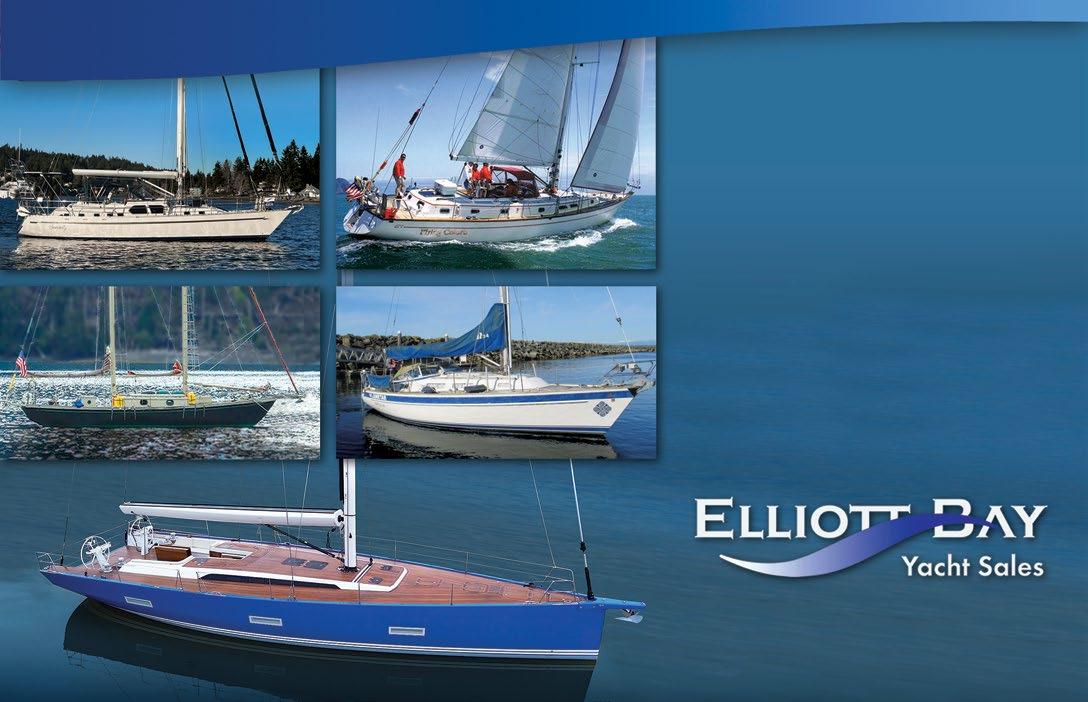

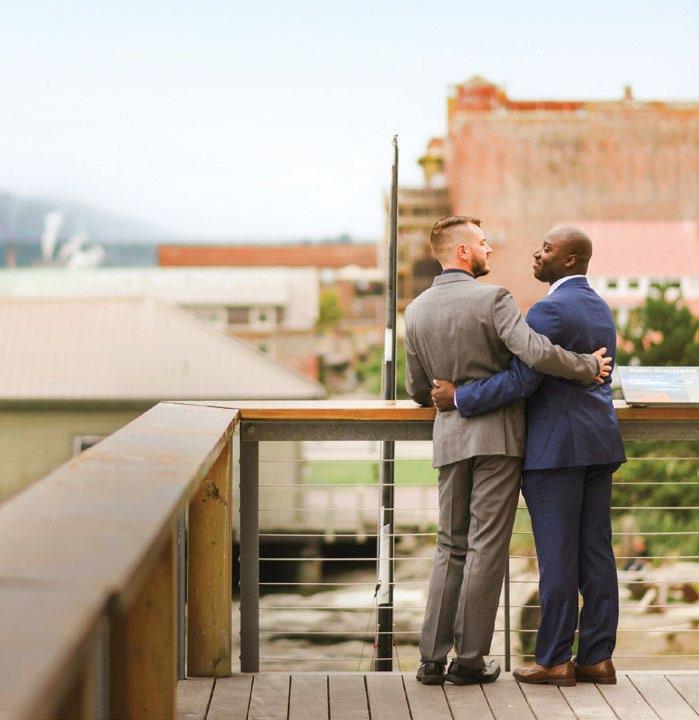


48º NORTH 51 JUNE 2024 46 - 43E - 43S - 38E - 38S There is storage everywhere!”. “I love the real wood”. “It feels so solid”. “This would be a safe boat for my dogs”. “I can’t believe that this is only a 38 foot boat”. people who’ve toured a Helmsman Trawlers® 38E Pilothouse: Helmsman Trawlers are built to exceptional standards – examine and compare! helmsmantrawlers.com | 206 282 0110 WLB Brokerage - boatshed seattle boatshed tacoma WLB 2601 West Marina Place, Suite D, Seattle info @ elliottbayyachtsales.com 206.285.9563 S ailboat S 52’ Tayana Deck Saloon ’07 $339,000 50’ Solaris ’21 ................................ $795,000 48’ Celestial CC ‘90 $125,000 47’ Beneteau ’05 $180,000 44’ Worldcruiser Schooner ‘79 .... $195,000 39‘ Farr 395 ’01 $50,000 37’ Hunter 37.5 ’91 $55,000 34’ Hallberg-Rassy ’03 ...................$139,000
E lliott b ay y acht S al ES 48’ Celestial
NORTHWEST MARITIME CENTER 431 Water Street Port Townsend, WA 98368 Breathtaking setting, NORTHWEST MARITIME CENTER 431 Water Street Port Townsend, WA 98368 Breathtaking setting, spectacular day! Ceremonies Receptions Rehearsals Contact us today venuerentals@nwmaritime.org
52’ Tayana 44’
Woldcruiser
50’ Solaris
34’ Hallberg Rassy



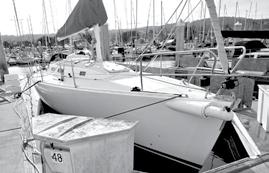


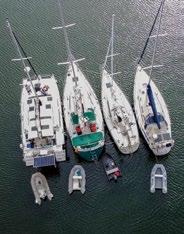


70’ SANTA CRUZ 70 ’85 ....................
$325,000
“CHARDONNAY III” Turnkey
Subchapter T vessel ready for charter business. Great opportunity to obtain a swift sailing passengers-for-hire boat.
54’ ROBERTS 54 ’79
$225,000
....................
“SPIRIT” Rugged bluewater vessel designed with comfort and safety in mind. Nicely upgraded.Coast Guard Certified for up to 42 passengers.
40’ J BOATS J/120 ’99
$108,000
....................
“SUR” Popular racer/cruiser that has mostly cruised and is a Mexico vet. Set up for cruising but would be suitable for club racing.
NEW LISTING

50’ GREEN MARINE DUBOIS 50 ’93 $59,500 “PERRYAYE”Custom one-design racing sloop with gorgeous lines. A real joy to sail. Motivated seller. Priced right!
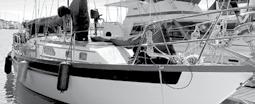
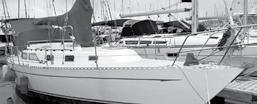
38’ CHEOY LEE PEDRICK 38 ’85 $89,500 “ZEPHYRUS”Looking for an easy-to-sail, reliable offshore performance cruiser for a shorthanded sailor or couple?

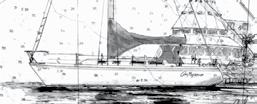
CATALINA
’91
“CONTAGIOUS”Thirty years of sailing in SoCal waters with the same owner! She’s priced to sell so don’t miss out.


SUBSCRIBE
PREMIUM 48° NORTH SUBSCRIPTION
Become a part of the 48° North crew! In addition to your magazine each month, with this exciting new subscription offering, you’ll also be supporting 48° North in a more meaningful way. But, warmed cockles are far from the only benefit. Others include:
• Discounts at Fisheries Supply Co.
• One free three-day to the Port Townsend Wooden Boat Festival ($40 value)
• 10% off of Northwest Maritime Center classes excluding Sailing Club
• Discounts on registration fees for events
• Cool bumper sticker and decals.
• $75/year (additional fees for First Class forwarding or International)
JUST THE MAGAZINE, PLEASE:
Our standard subscription gets you 12 months of 48° North and its associated special publications (SARC, Setting Sail, and the Official R2AK Program).
• $39/year (additional fees for First Class forwarding or International)
Subscribe today online: 48north.com/subscribe
48º NORTH 52 JUNE 2024 THINKING OF SELLING YOUR BOAT? LET US HELP! Power or Sail, we have buyers waiting! Call: 619.224.2349 or email: info@yachtfinders.biz A Leader in Brokerage Sales on the West Coast (619) 224-2349 • Fax (619) 224-4692 • 2330 Shelter Island Dr. #207 San Diego, CA 92106 www.yachtfinders.biz • info@yachtfinders.biz Professionally staffed! Open 6 days, Sun by appt. 38’ CATALINA 380 ’97 ............$84,500
“FREUDIAN SLOOP” Well laid out, spaciously designed coastal cruiser for daysailing, coastal cruising and living aboard.
36’
42’ FORMOSA 42 ’82 $57,500 “ZEPHYRUS” Long range cruiser with beautiful teak below and lots of storage. Two staterooms and convertible salon.
36
$49,500
MONTEREY
MONTEREY
TODAY!
26 48° NORTH'S 40TH ANNIVERSARY 40 RACE WEEK PNW 32 PACIFIC GALE SAIL AUGUST 2021
Zube • 2003 Hallberg-Rassy 39 $239,000
Zube is one of the last Hallberg-Rassy 39s to be built by the venerable Hallberg-Rassy shipyard in Ellos, Sweden. Outfitted for blue water cruising, Zube has benefited from the addition of a stainless-steel arch/dinghy lift with solar, power winches, Leisure Furl in-boom mainsail furling, bow thruster, recent Raymarine chartplotters and a new Yanmar engine from 2012 with just over 1000 hours. She also received a full upgrade to her DC system in 2021 with Victron lithium house battery bank, inverter/charger and monitors. The Hallberg-Rassy 39 is small enough to day sail yet large enough to comfortably circumnavigate. Many sisterships have been used by families for Northwest cruising while others have won their class in the ARC rally and gone on to circumnavigate. Storage is phenomenal for a sub-forty-foot boat while comfort is optimized through Hallberg-Rassy’s evolutionary (vs. revolutionary) boat design program. The quality of space is excellent, and ergonomics of the settees, cockpit and deck layout leave owners appreciating their boats more and more with time.



70

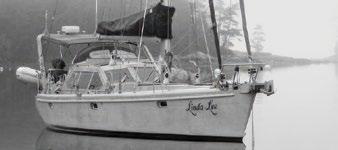
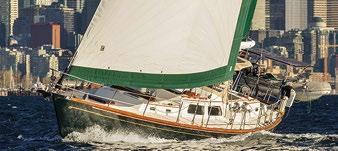

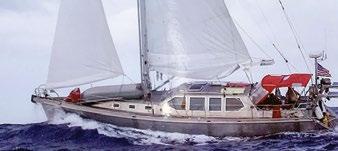

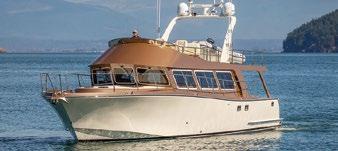
48º NORTH 53 JUNE 2024 QUALITY YACHTS FROM SWIFTSUREYACHTS.COM NEW YACHTS FOR WORLD CRUISING SwiftsureYachts www.swiftsureyachts.com 206.378.1110 | info@swiftsureyachts.com 2540 Westlake Ave. N., Ste. A Seattle, WA 98109 facebook.com/swiftsureyachts Seattle & Pacific Northwest San Francisco Bay Rhode Island With brokers on both west and east coasts, Swiftsure Yachts is dedicated to providing premium service to sailors buying or selling quality yachts. swiftsure locations Jeanneau 440 • 2020 • $407,550 Lyman-Morse Seguin 44 • 1982 • $168,000 Hinckley Sou’wester 59 • 1997 • $524,000 Tayana 48 • 2005 • $399,000 Coastal Craft 56 • 2012 • $1,750,000
49 • 2000 • $399,000 Garcia Exploration 45 • 2025 • €709,498 Radford 14 Meter 46 • 2000 • $320,000 Dudley Dix 43 • 2004 • $375,000
Hylas
52 Santa Cruz 2001 $349,000 49 Bavaria 2003 $189,000 48 OceanAlexanderAltus2003 $399,000 48 Saga 2003 $299,000 46 Hallberg-Rassy 2003 $420,000 46 Beneteau 461 1999 Inquire 45 Allures 45.9 2021 $699,000 45 Allures 45.9 2018 $629,000 45 Freedom 1989 $147,900 44 Elan 45.1 2021 €259,000 44 Gib’Sea 126 1986 $74,500 44 Catalina Morgan 440 2005 $197,000 43 Shannon 1995 $175,000 43 Irwin 1987 $150,000 42 Catalina 42 (MKII) 2007 $185,000 42 Valiant 2008 $275,000 41 Sceptre 1989 $139,000 40 Passport 1984 $149,000 40 Wauquiez Centurion 1991 $109,500 36 Sabre 362 1996 $125,000 36 Universal 1980 $75,000 35 J/109 2003 Inquire 35 Hanse 350 2008 $95,000 35 Shaw Riptide 1996 $145,000 34 Jeanneau 34.2 2001 $79,000 34 Catalina 34 (MKII) 1997 $75,000 28 Alerion Express 2000 $62,500 28 Cutwater 2013 $149,000 27 Ranger Tug 2018 $149,000
Wylie 1993 $279,000 62 Oyster 625 2014 $1,495,000

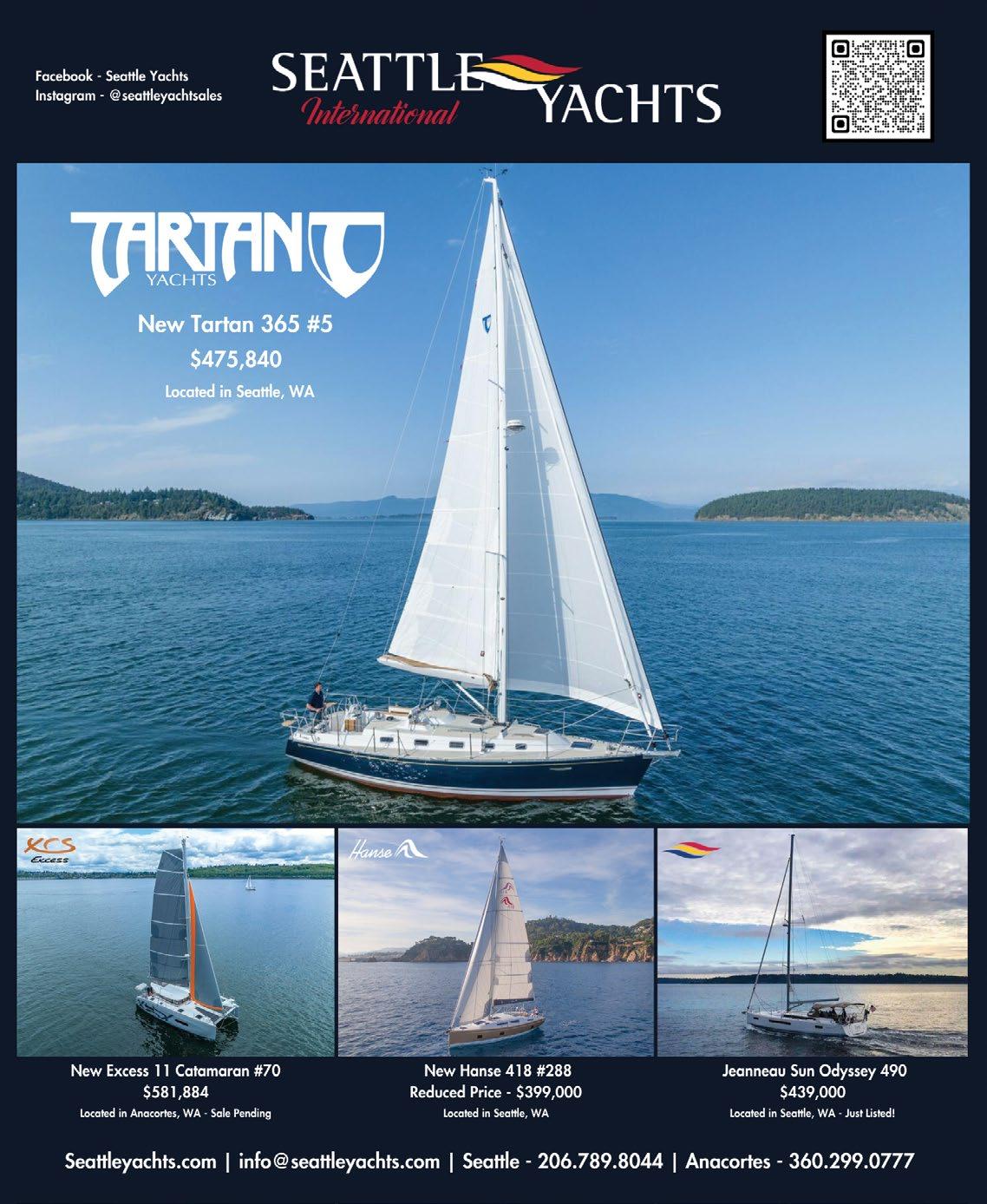

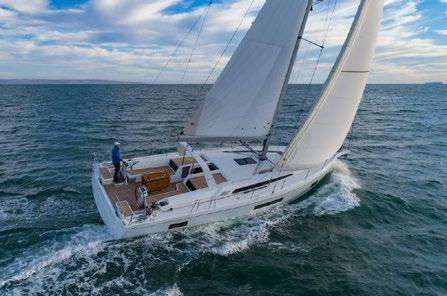




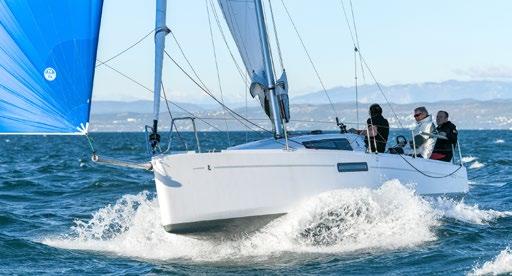




48º NORTH 55 Oceanis 51.1 Oceanis 46.1 Oceanis 40.1 Oceanis 34.1 First 27 HISTORIC D E A L S BENETEAU BOATS IN STOCK AND READY FOR SUMMER SAILING CONTACT US NOW W W W . S I G N A T U R E - Y A C H T S . C O M 2 0 6 - 2 8 4 - 9 0 0 4 2476 WESTLAKE AVE N #101 SEATTLE, WA 98109

MARINE SERVICENTER



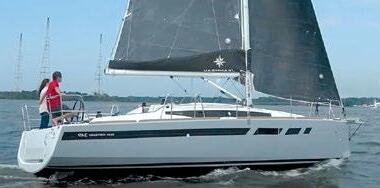

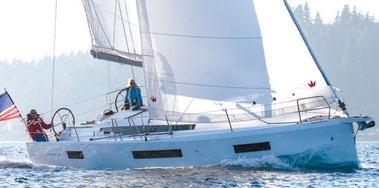

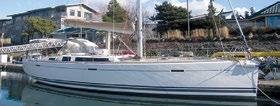
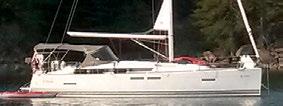




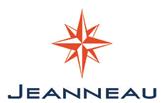






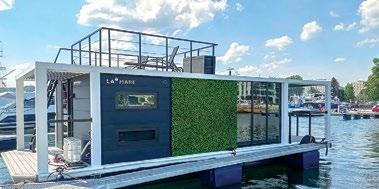



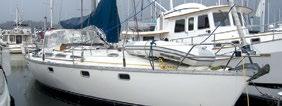

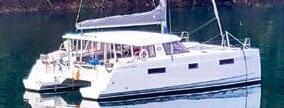





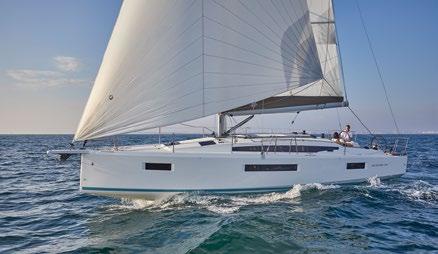




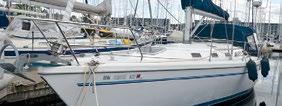



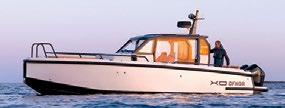








48º NORTH 56 JUNE 2024
2023 Jeanneau 490 #77424: $599,896 Don Smith Dean Iwata Curt Bagley 2024 Lagoon 42 #835: $789,828 2024 XO Defender 9 • $398,784 Dealer of the Year ‘23 • ‘22 • ‘21 • ‘20 • ‘19 • ‘16 2024 Jeanneau 380 #77927: $378,535 2011 Dufour 525 GL • $385,000 2011 J/111 • $249,000 1996 X-Yachts IMX 38 • $55,000 Reduced 1990 Jeanneau Sun Magic 44 • $109,500 LISTINGS WANTED! • WE GET RESULTS ! See Your Boat in 48° North & Five Online ads! 43' Jeanneau 43DS '03 SOLD 41' Jeanneau 410 ‘20 ............................. SOLD 40' Jeanneau 409 ‘13 ............................. SOLD 40' Jeanneau 40DS ‘99 SOLD 38' C&C 115 '06 ...................................... SOLD 38' Catalina 380 '99 ............................... SOLD 37' Jeanneau SO37 ‘01 SOLD 36' Islander 36 ‘75 .............................. $19,500 36' Catalina 36 ‘94 ................................. SOLD 35’ Catalina 350 ‘03 SOLD 35' Jeanneau 349 ‘20 SOLD 34' Bavaria 34 ‘01 .................................. SOLD 32' Catalina 320 ‘00 .............................. SOLD 28' Bristol Channel Cutter ‘88 SOLD 22' Marshall Catboat 22 ‘22 ................... SOLD Dan Krier Jeff Carson John Sheppard Yacht Sales - Since 1977 In Stock • SAVE $138,379! In Stock • SAVE $99,839! 2024 Jeanneau 349 Ltd Ed #77925: $248,490 In Stock • SAVE $26,860! In Stock • SAVE $16,466! In Stock • SAVE $33,285! 2024 Catalina 355 #182: $358,746 In Stock • SAVE $11,560 In Stock • SAVE $18,000 2008 Hanse 370 • $119,000 1997 Catalina 42MkII • $139,500 Seattle Bellingham Los Angeles San Diego 2442 Westlake Ave. N 1801 Roeder Ave. #128 4655 Admiralty Way, #208 955 Harbor Island Dr., #160 206.323.2405 360.770.0180 310.963.3750 619.733.0559 info@marinesc.com • www.marinesc.com 2024 Jeanneau 440 #77930: $549,684 In Stock • SAVE $42,909! 2014 Harbor 25 • $39,500 2024 XO Explorer 10 S+ • $398,813 1994 Tofinou 23 • $37,000 2024 LaMare Modern 11 #442: $369,866 2014 Jeanneau 409 • $214,500 Reduced In Stock 2016 Nautitech 40 • $448,000 New Listing CROSSOVER LA MARE HOUSEBOATS Reduced New Listing 2011 Dufour 525 GL • $385,000 New Listing In Stock



































































































































 by Michael Boyd
Photos by Karen Johnson
by Michael Boyd
Photos by Karen Johnson

























 by Andy Cross
by Andy Cross




































 by Nicholas Leede and the Tachyon Crew
by Nicholas Leede and the Tachyon Crew


 by David Miller
by David Miller



















































































































